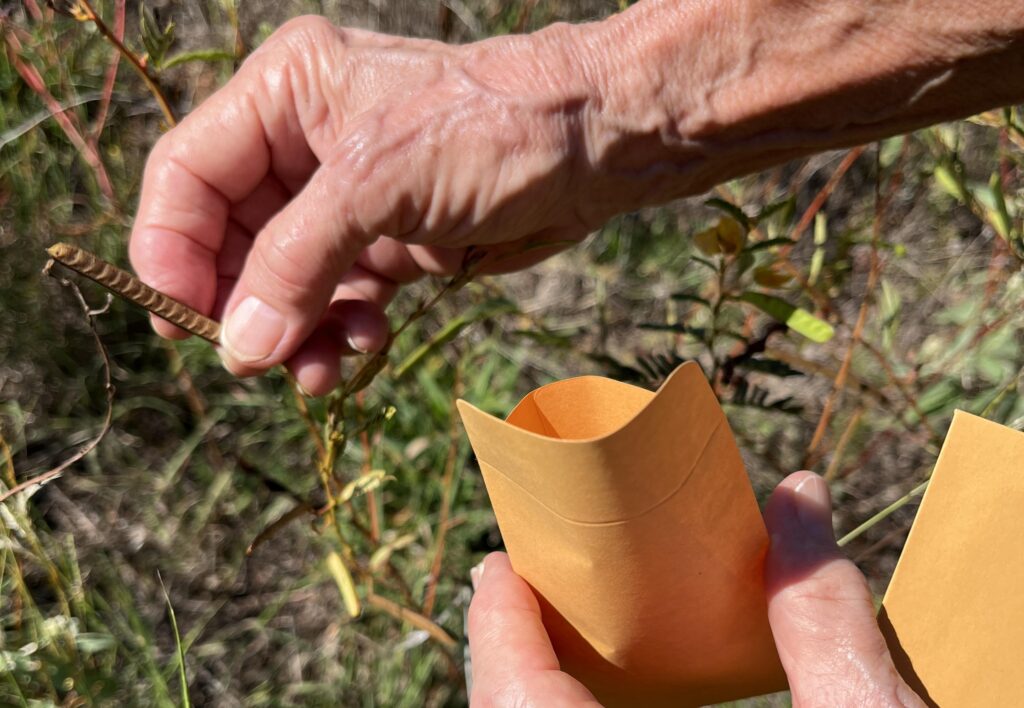
BRIT researchers strengthen bonds with wider scientific community
BRIT scientists have non-stop schedules. But no matter how busy they get, botanists never forget they are part of an international community of scientists.

BRIT scientists have non-stop schedules. But no matter how busy they get, botanists never forget they are part of an international community of scientists.
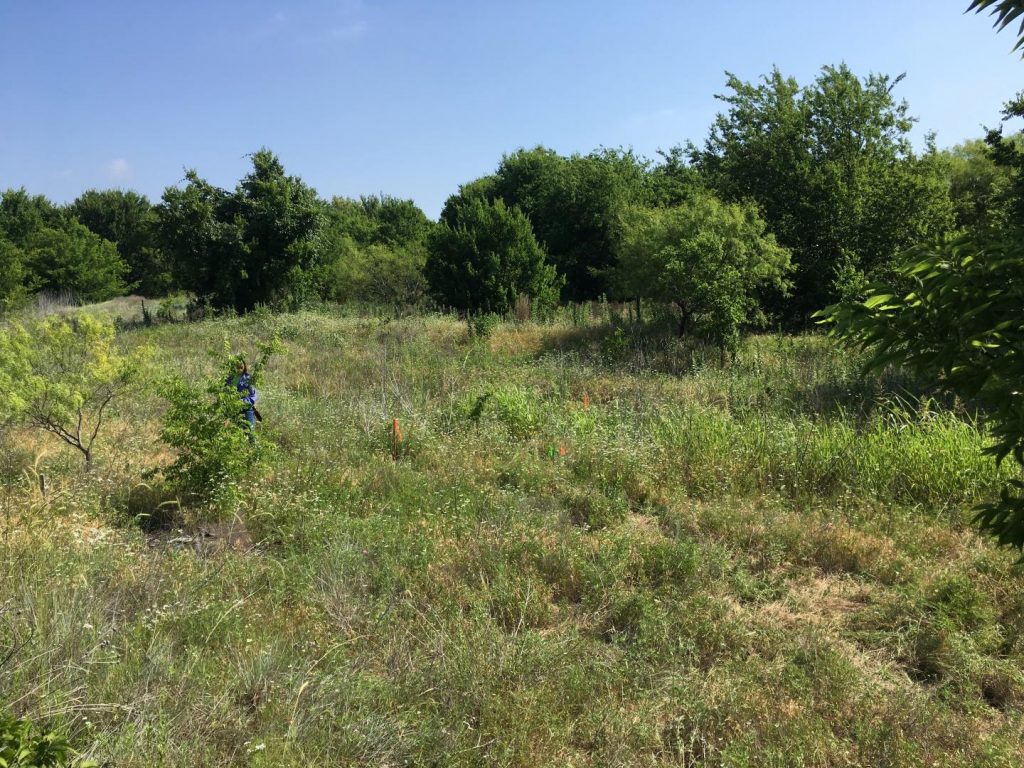
The Texas Plant Conservation Conference is a professional-level meeting serving scientists, land managers, state and federal agencies, local governments, and other professionals with an interest in plant conservation in Texas and adjacent regions. Conference attendees explore current research and conservation projects on rare plants, native plant communities, plant monitoring methods, and plant management practices for native Texas plants. This conference is ideal for conservation organizations, agencies, academics and members of the public interested in native plant conservation.

The Texas Plant Conservation Conference is a professional-level meeting serving scientists, land managers, state and federal agencies, local governments, and other professionals with an interest in plant conservation in Texas and adjacent regions. Conference attendees explore current research and conservation projects on rare plants, native plant communities, plant monitoring methods, and plant management practices for native Texas plants. This conference is ideal for conservation organizations, agencies, academics and members of the public interested in native plant conservation.

Texas is home to 448 rare vascular plant species, including 113 species categorized by NatureServe as Critically Imperiled (G1) and at high risk for extinction. For many of these species only a handful of individual plants remain in the wild. These plants are faced with increasing levels of threats, with population growth and the resulting development, land use changes, invasive species, and now climate change all threatening to push our rarest species closer to extinction.

The Texas Plant Conservation Conference is a professional-level meeting serving scientists, land managers, state and federal agencies, local governments, and other professionals with an interest in plant conservation in Texas and adjacent regions. Conference attendees explore current research and conservation projects on rare plants, native plant communities, plant monitoring methods, and plant management practices for native Texas plants. This conference is ideal for conservation organizations, agencies, academics and members of the public interested in native plant conservation.
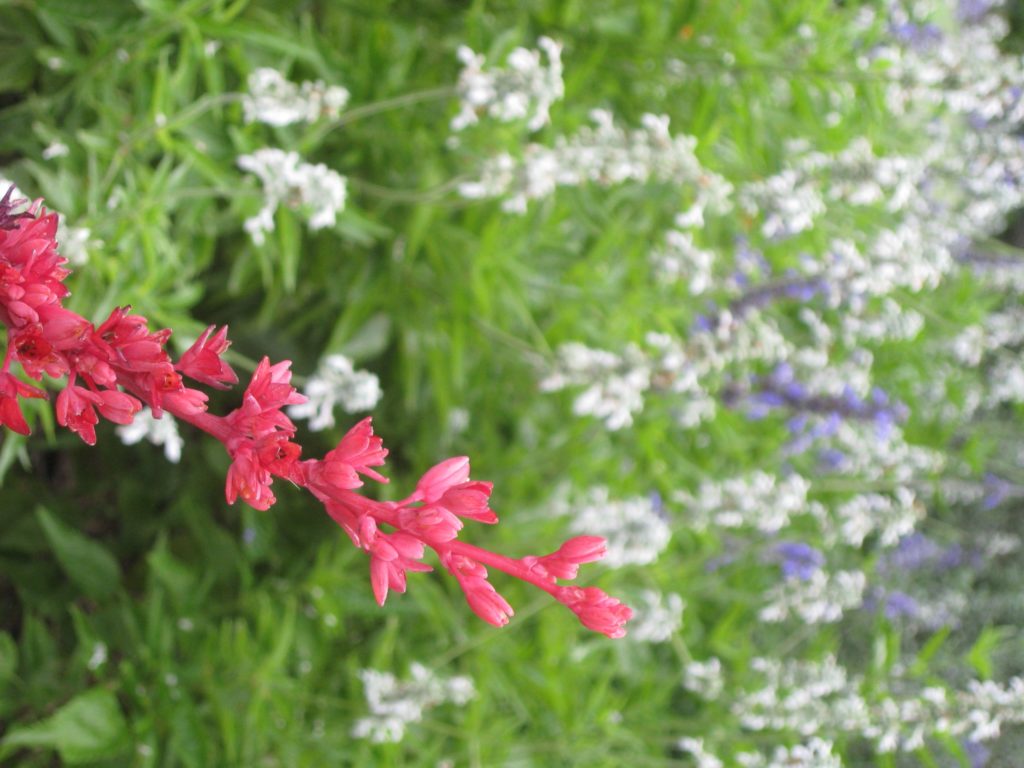
The Texas Plant Conservation Conference is a professional-level meeting serving scientists, land managers, state and federal agencies, local governments, and other professionals with an interest in plant conservation in Texas and adjacent regions. Conference attendees explore current research and conservation projects on rare plants, native plant communities, plant monitoring methods, and plant management practices for native Texas plants. This conference is ideal for conservation organizations, agencies, academics and members of the public interested in native plant conservation.
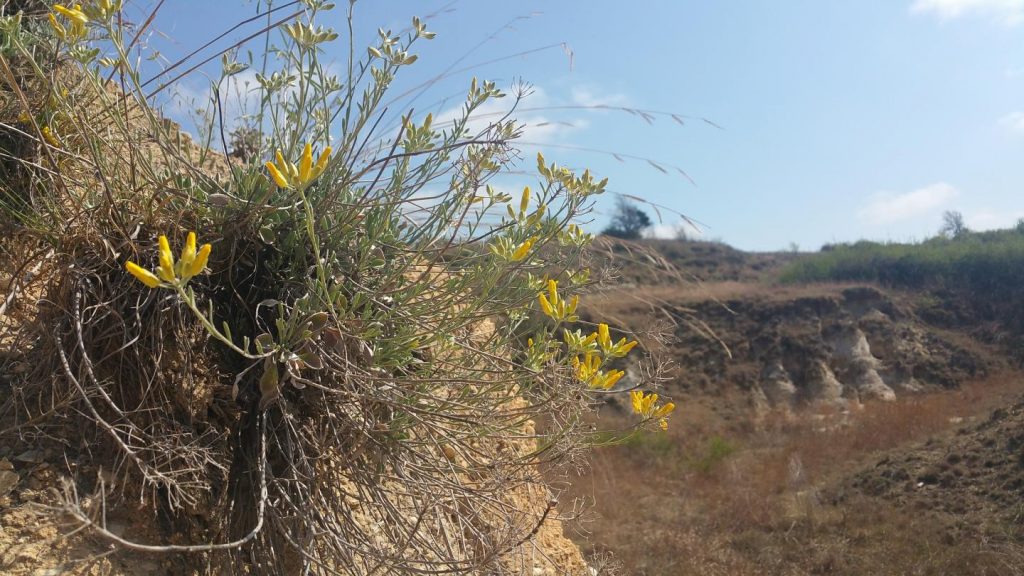
The Dallas-Fort Worth metropolitan area spans two ecoregions, the Cross Timbers and the Northern Blackland Prairie (Gould et al. 1960). The Blackland Prairie begins on the eastern side of the metroplex in Hunt, Kaufman, and Ellis counties, includes most to all of Collin and Dallas counties, and the eastern edges of Denton, Tarrant, and Johnson counties (Gould et al. 1960).

Pediomelum reverchonii (S. Watson) Rydb. (Fabaceae) or Reverchon’s scurfpea, is a bushy-branched perennial forb growing to 120 cm in height (Diggs et al. 1999). Flowers are purple, 10 to 15 mm long. Inflorescences are arranged in a loose spike-like raceme with three to seven flowers each at the ends of stems. Pediomelum reverchonii often co-occurs with other similar members of the genus, including P. linearifolium, P. cuspidatum, and P. cyphocalyx.
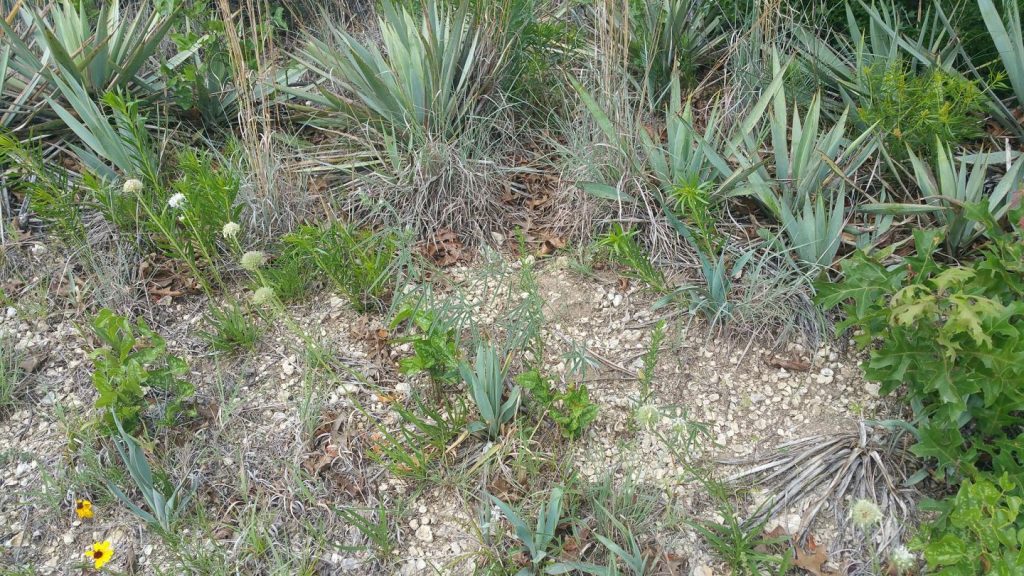
Pediomelum cyphocalyx (A.Gray) Rydb. (Fabaceae) is a perennial herb with a tuberous root up to 2 cm in diameter. It grows to a height of up to 1 m, with stems usually solitary, erect, and simple or sparingly branched above (Rydberg 1919, Diggs et al. 1999). It can be distinguished from the other species in the genus within the region by the presence of cauline leaves, dense, many-flowered spike-like inflorescence, peduncles exceeding the subtending petioles, and linear-lanceolate or narrowly oblong-lanceolate leaflets (Diggs et al. 1999).
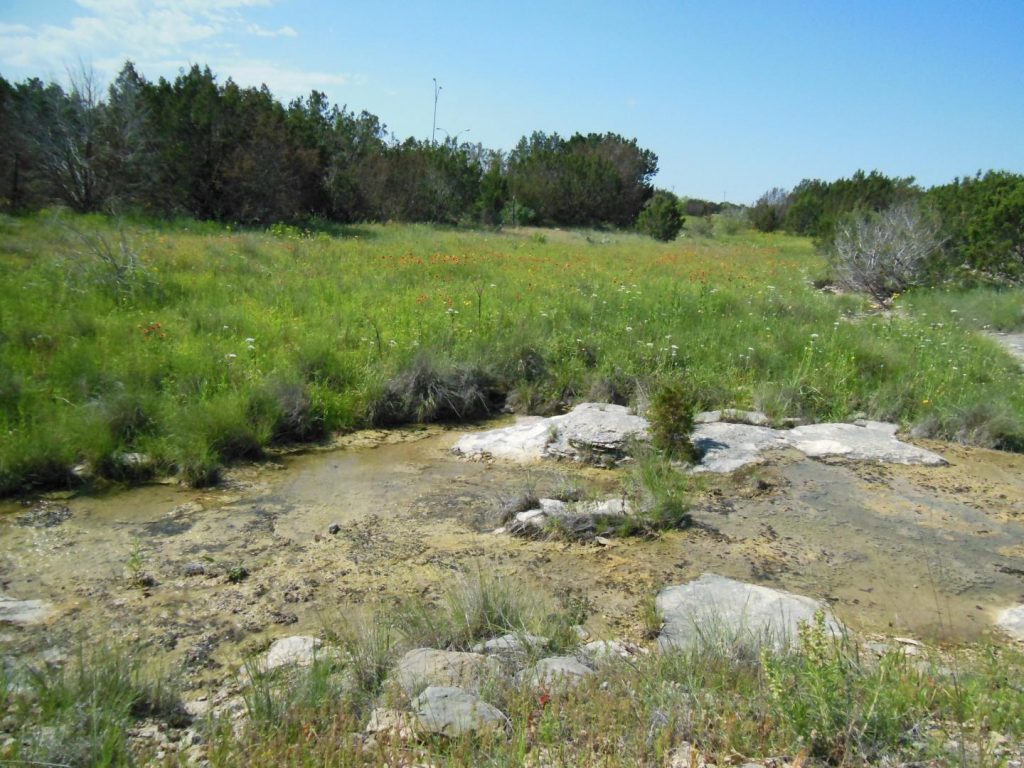
Isoetes butleri is a fern ally that grows in limestone outcrops across most of the Eastern United States. The species was known to occur in a few sites in Texas but was unknown in north central Texas. BRIT botanists discovered the species in the limestone prairies of north central Texas, where it appears to be very common, with 125 populations. The species is a common member of limestone glade seep communities. It can be seen in shallow soil overtop of limestone bedrock in areas where seasonal seepage keeps the ground wet during the spring.
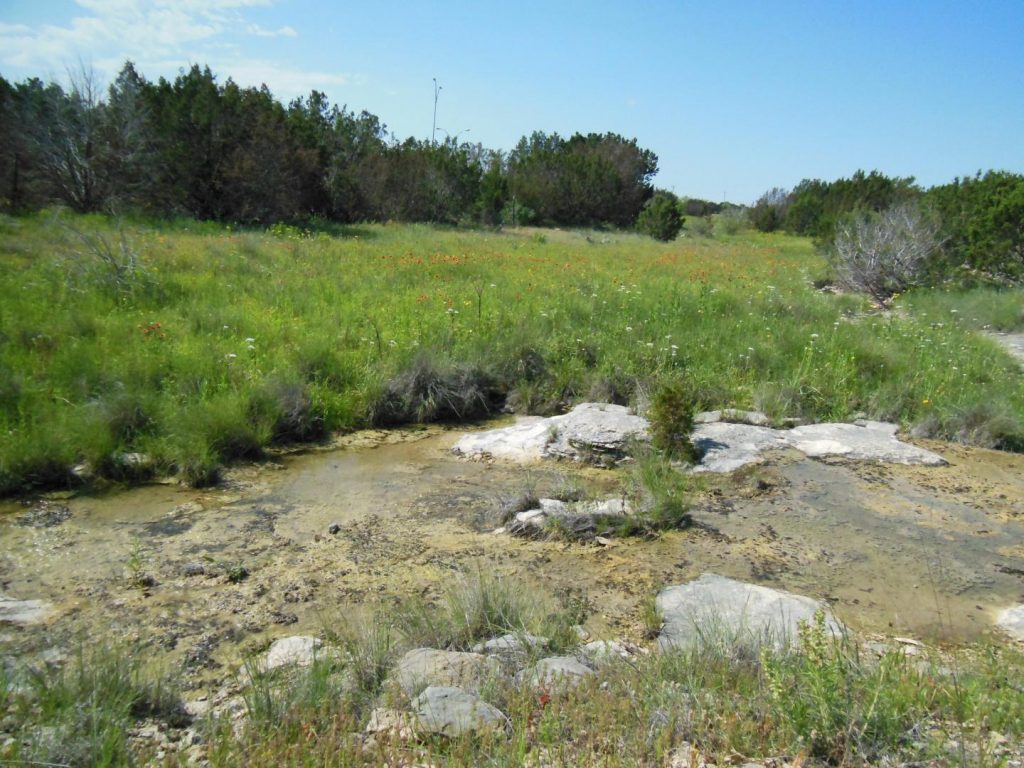
Gratiola quartermaniae was first described from Eastern North America by Estes and Small in 2007. The species typically grows in thin, seasonally saturated soil over exposed limestone or dolomite bedrock. This habitat is typically found associated with limestone glades, barrens, prairies, and alvars. A limestone glade is an area of exposed limestone bedrock with little to no soil overtop.
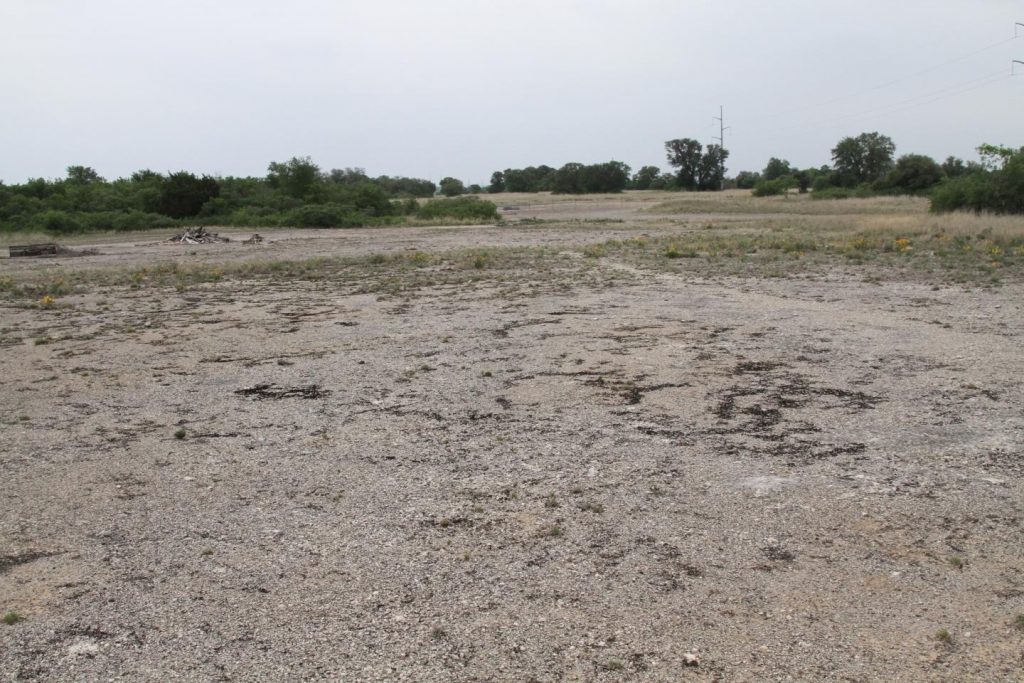
In the spring of 2012, BRIT botanists conducted extensive surveys of limestone prairies, barrens, and glades in the Fort Worth Prairie and northern Limestone Cut Plain of north central Texas. The Fort Worth Prairie (also known as the Grand Prairie) is a vast grassland with gently sloping, almost level plains dissected by valleys along rivers and streams. This prairie ecosystem is underlain by limestone geology with limestone bedrock near the surface across most of the region. This limestone gives the Fort Worth Prairie its unique features.
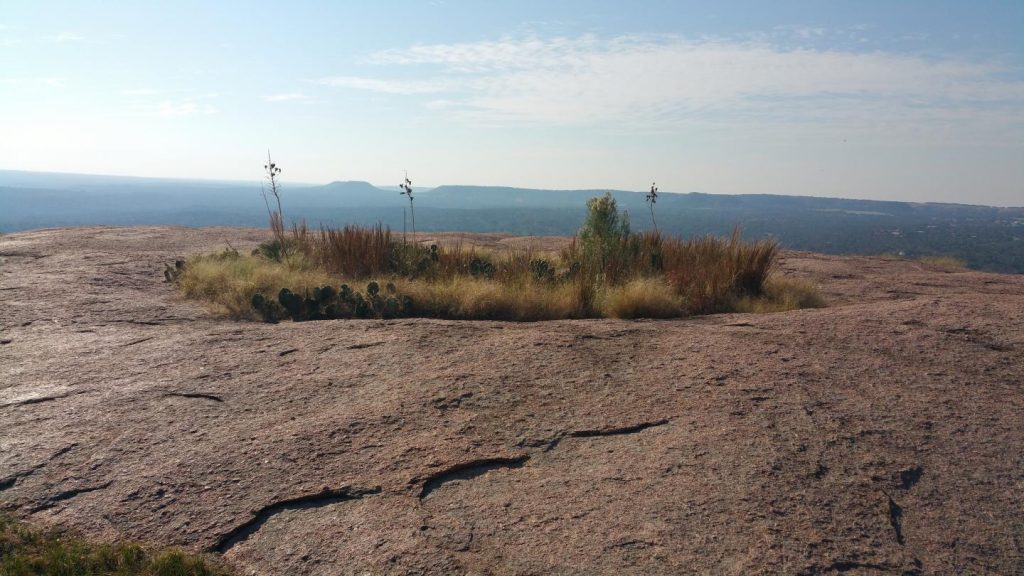
During the course of the flora of Enchanted Rock project, several interesting species were found. One species of note is Cyperus granitophilus (granite flat sedge). This species is a member of the sedge family (Cyperaceae) that is known to occur in the Piedmont granite regions of Georgia, Alabama, South Carolina, North Carolina, and Virginia. This species only grows on granite outcrops. While conducting field work for the flora of Enchanted Rock, Bob O’Kennon and Kim Taylor discovered a sedge that they did not recognize.
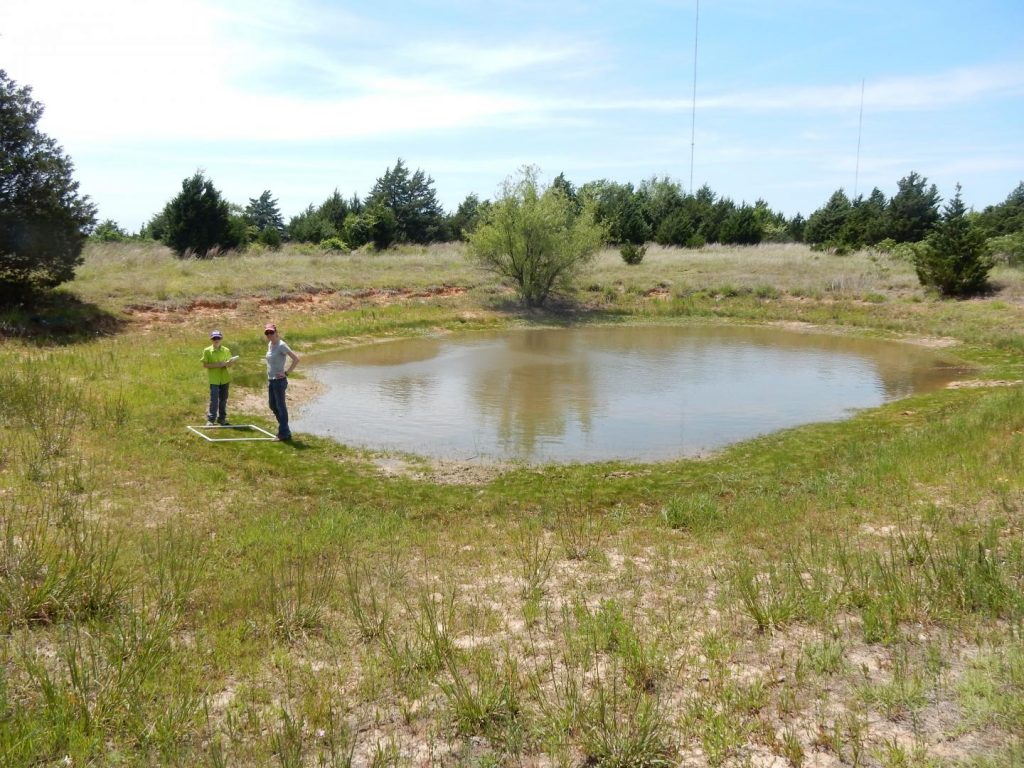
The 2012 Texas Conservation Action Plan (TCAP) for the Cross Timbers Region identifies the lack of information and lack of processing of existing data for Species of Greatest Conservation Need (SGCN) as two major issues for the region. Little information is available about the distribution and habitat needs of SGCN within the region and little has been done with what data does exist. This knowledge gap makes it “difficult to focus or prioritize management objectives or share information with private landowners about the importance of some sites, populations, or communities” (TCAP 2012).

The Texas Plant Conservation Conference is a professional-level meeting serving scientists, land managers, state and federal agencies, local governments, and other professionals with an interest in plant conservation in Texas and adjacent regions. Conference attendees explore current research and conservation projects on rare plants, native plant communities, plant monitoring methods, and plant management practices for native Texas plants. This conference is ideal for conservation organizations, agencies, academics and members of the public interested in native plant conservation.

Over the past decade, citizen science, the use of volunteers to collect data or conduct research, has increased in popularity. It has enabled scientists to collect large amounts of data using minimal resources and time. The use of citizen scientists to collect data is more cost effective than traditional science, even when experts are used to verify data collected (Gardiner et al. 2012).
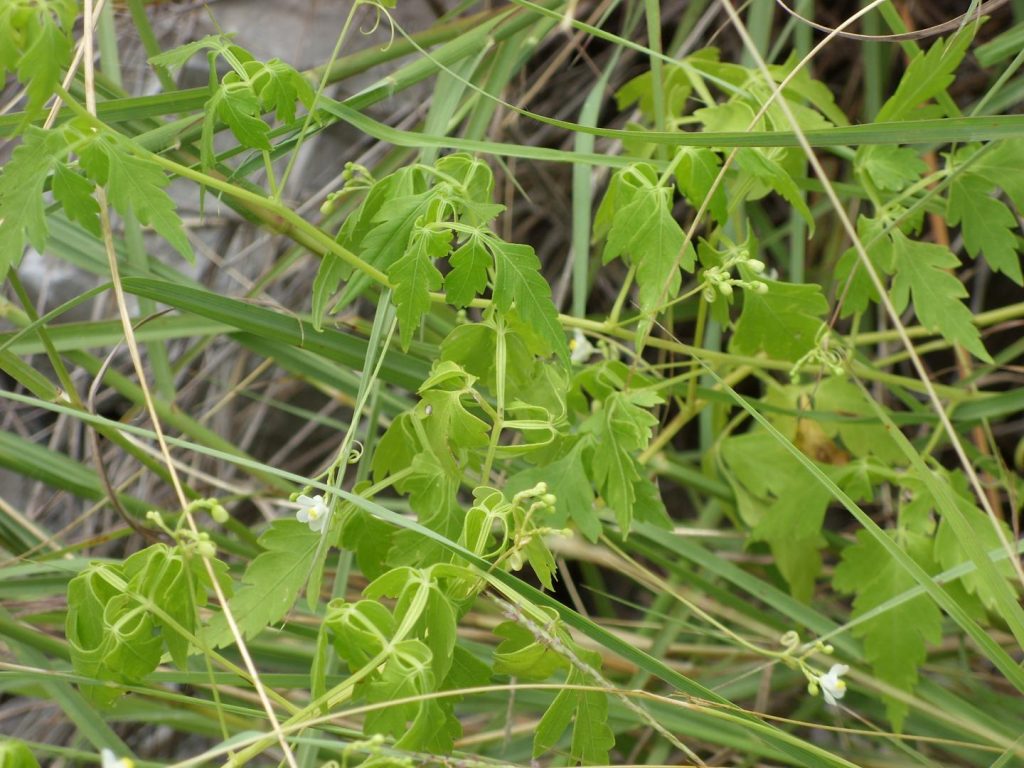
Through a 2017 Farm Bill grant, 4 botanic gardens across the nation commenced deployment of the PRE™ (Plant Risk Evaluator) tool and database. The PRE tool is a new plant risk assessment platform to address “what’s invasive?” while equipping the horticultural trade with a science-based and collaborative decision support tool. Each botanic garden partner assessed 50 plants of interest or contention within their region, for a total of 200 regional assessments. BRIT partnered with the Fort Worth Botanic Garden to evaluate species specific to Texas.
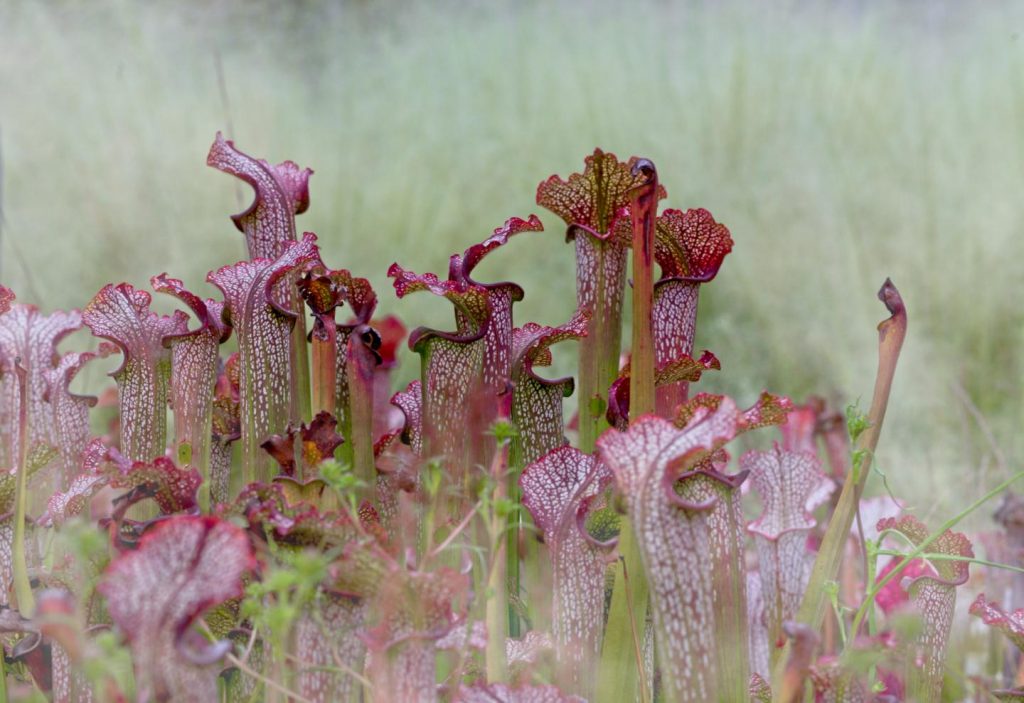
NatureServe Conservation Status Ranks assess the conservation status of species at the global, national, and sub-national scale (G-rank, N-rank, and S-rank, respectively). These ranks assess the risk of species extinction at the global scale, or extirpation at the national and subnational scales. A standardized methodology and rank calculator have been developed to remove the ambiguity from the process of assigning ranks and ensure a transparent, consistent, and rigorous assessment to justify ranks.
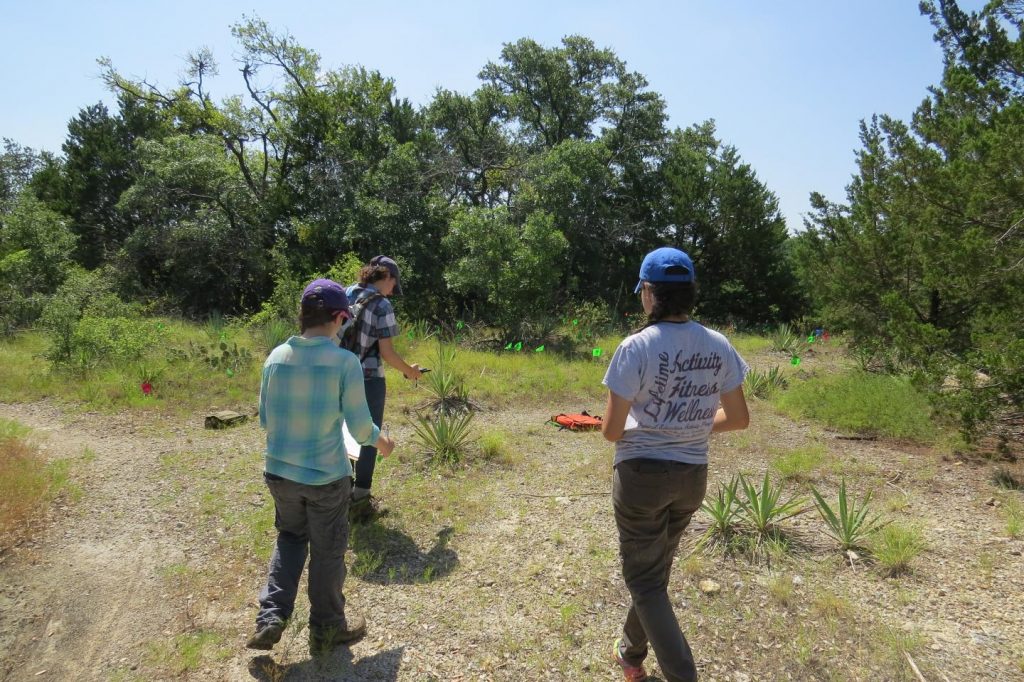
Just under 450 plant species are considered rare in the state of Texas. For many of these, a lack of basic information on where they grow is the biggest hindrance to their conservation. Little information is available about the distribution and habitat needs of many rare species, and little has been done with what data does exist. This knowledge gap makes it difficult to prioritize conservation objectives.
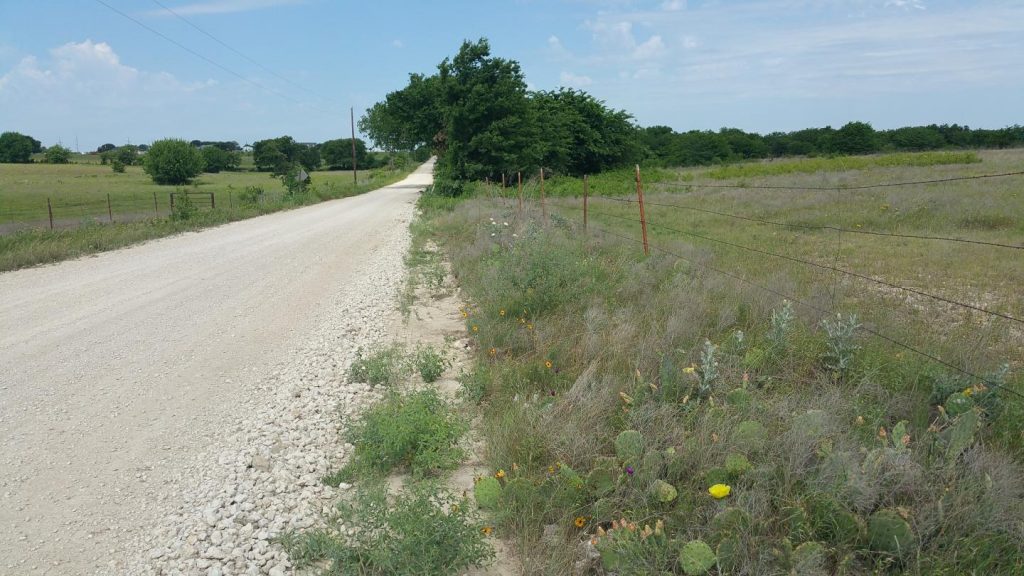
BRIT is partnering with Tarleton State University to create predictive habitat maps of rare species for the Texas Department of Transportation. BRIT is working to better understand the habitat needs and preferences of 17 rare species by examining herbarium specimens and the scientific literature. This information will be mapped to show areas where each of the rare species is most likely to occur.
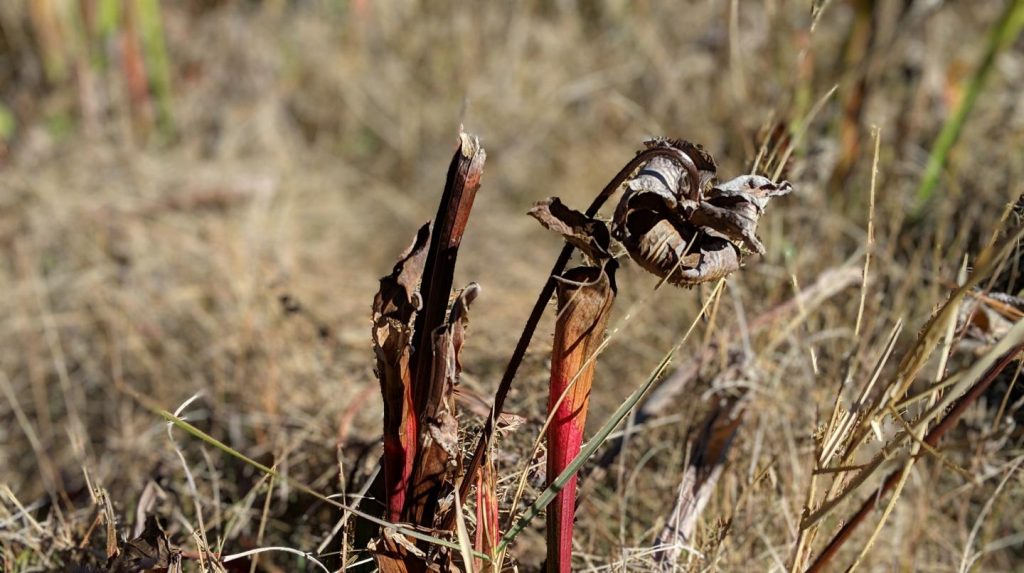
Texas is home to 448 rare vascular plant species, including 113 species categorized by NatureServe as Critically Imperiled (G1) and at high risk for extinction. For many of these species only a handful of individual plants remain in the wild. These plants are faced with increasing levels of threats, with population growth and the resulting development, land use changes, invasive species, and now climate change all threatening to push our rarest species closer to extinction.
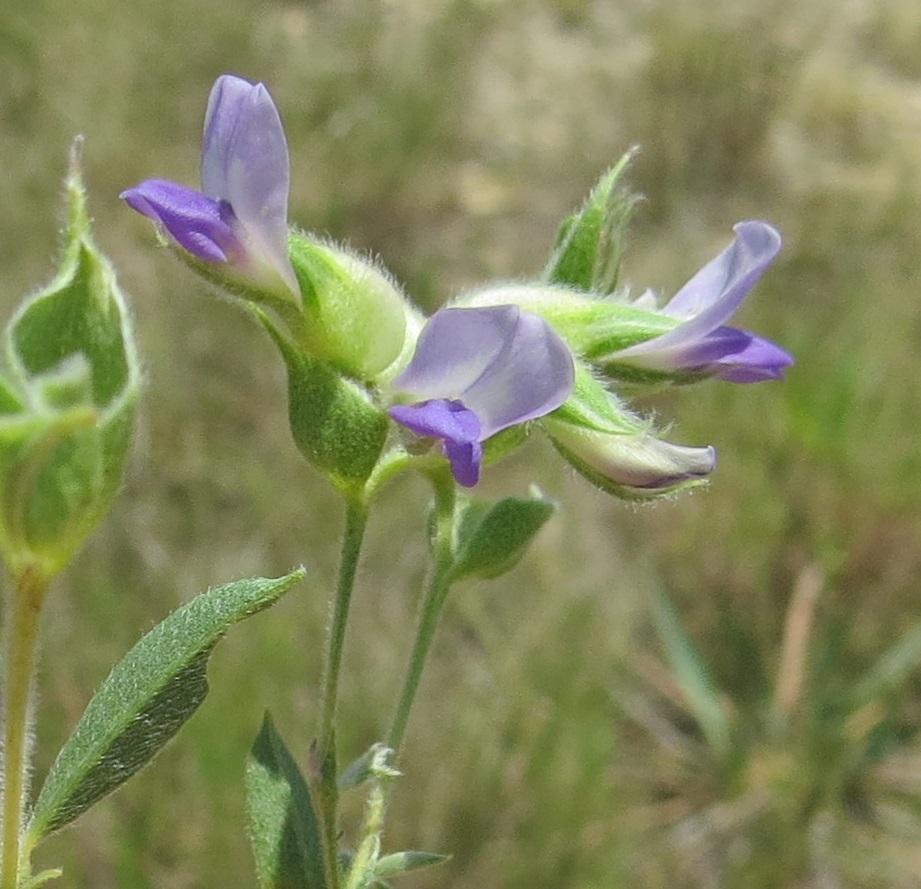
TxDOT will use maps to find, protect rare plants along Texas highways FORT WORTH, Texas
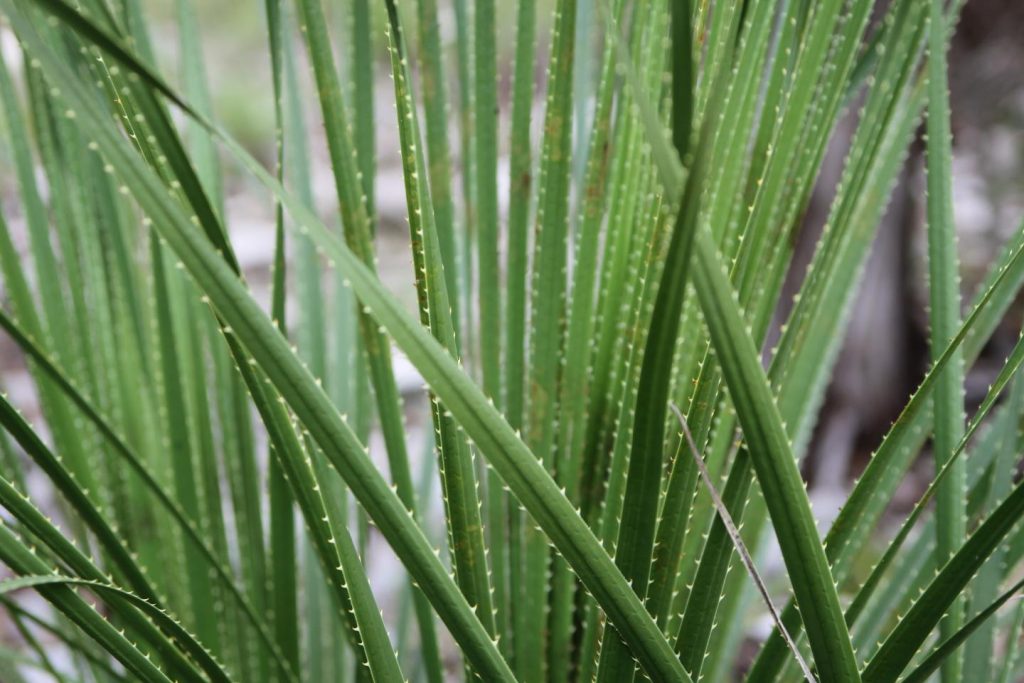
In the conservation community, there is often nothing more rewarding than walking through a landscape that you had a hand in saving and knowing that you did good. You saved this rare and valuable natural treasure for future generations. This is conservation at its finest and what most in the conservation community strive for. But there’s so much more that goes into the process, and believe it or not, it’s the early steps that I find most exciting.

The Texas Native Boardwalk will be grazed by goats for the first time in April 2024 as part of a new land management program at the Garden.
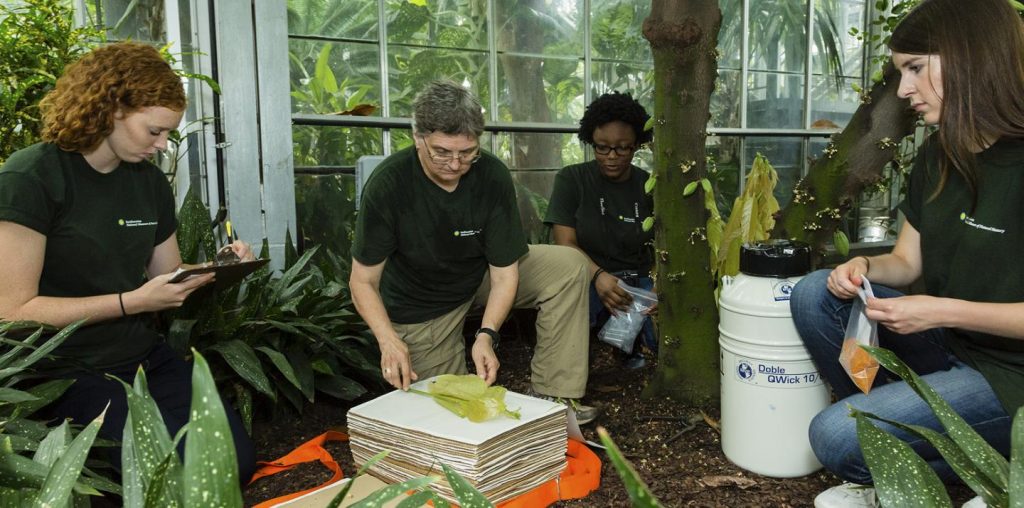
Natural history collections play an increasingly vital role in biodiversity studies. Much of the research that leverages these collections combines this accumulated diversity knowledge with genomic approaches. There is a movement toward improved collection practices that incorporate resources that can be used in genomics research.

The region where the eastern slopes of the Andes Mountains meet the Amazonian lowlands harbors one of the greatest concentrations of biological diversity on Earth. Thousands of species and many complex tropical ecosystems exist along an altitudinal gradient from 4,000 meters (13,000 feet) in the Andes to 200 meters (650 feet) in the Amazonian lowlands.
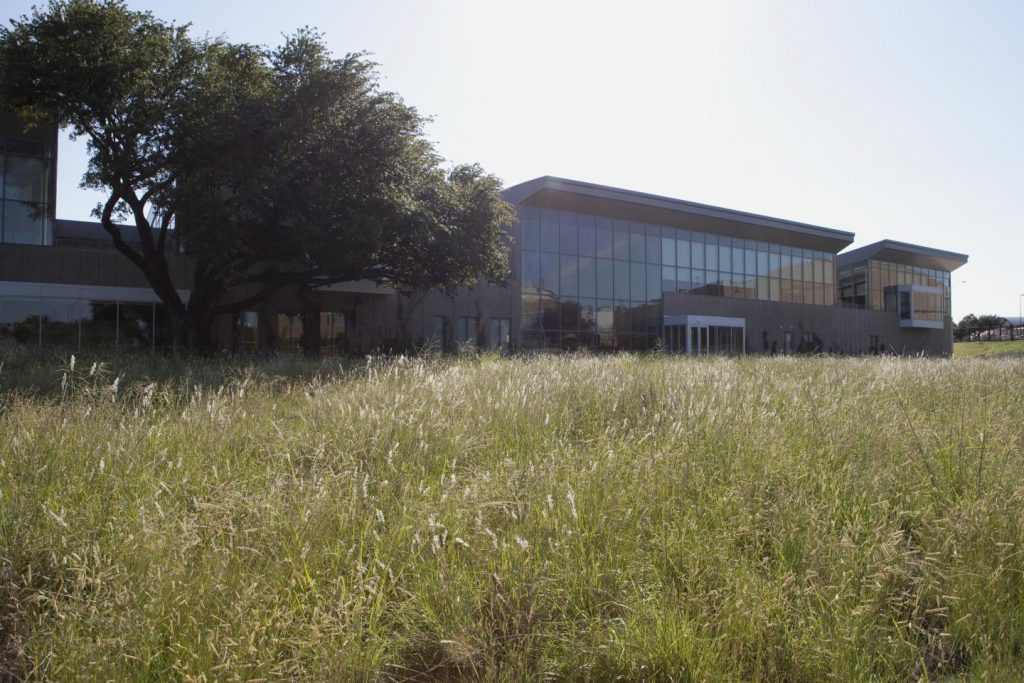
The purpose of the prairie on the BRIT Landscape is to provide the public a glimpse of the aesthetics of natural or native landscapes, reduce BRIT’s demand for water resources, be a valuable source for research into restoration of prairies in urban environments, and provide a model for habitat restoration and ecological connectivity. The culture of the region arose in the context of prairies.

This project involves conducting a detailed biodiversity assessment to be used for the development and implementation of a natural resource management plan for the 33 acres of undeveloped land included in the 147-acre campus of All Saints’ Episcopal School (ASES) in Fort Worth, Texas. The property also includes a 12-acre natural area with a wetland, riparian area, native grassland, orchard, and vegetable garden.
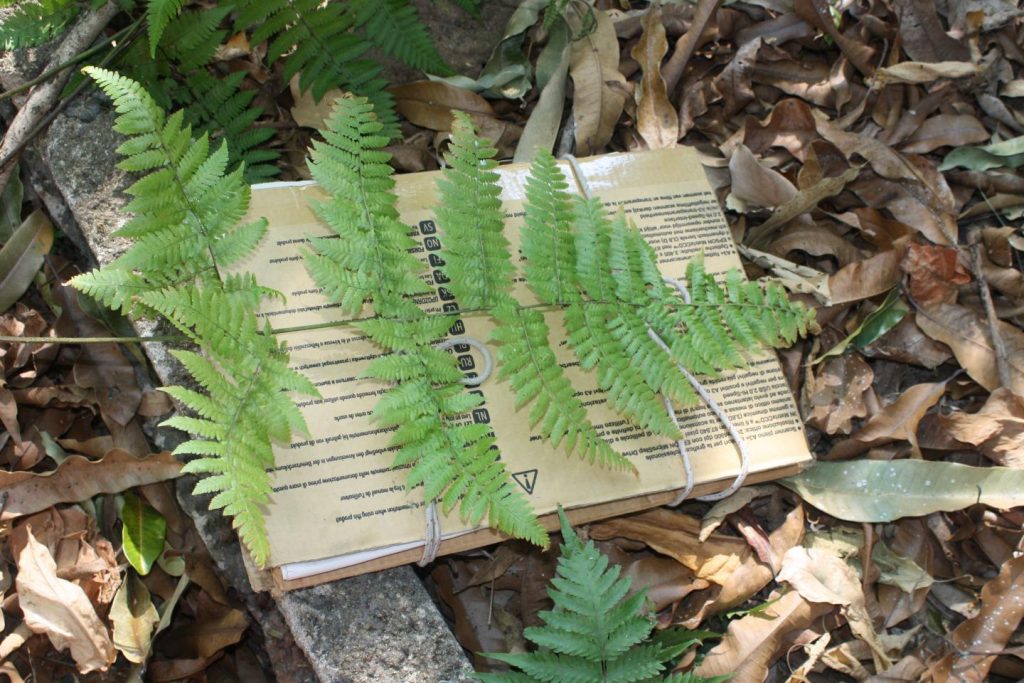
Taxonomy and Evolution of Ferns and Lycophytes Program Currently, we make part of a three-year
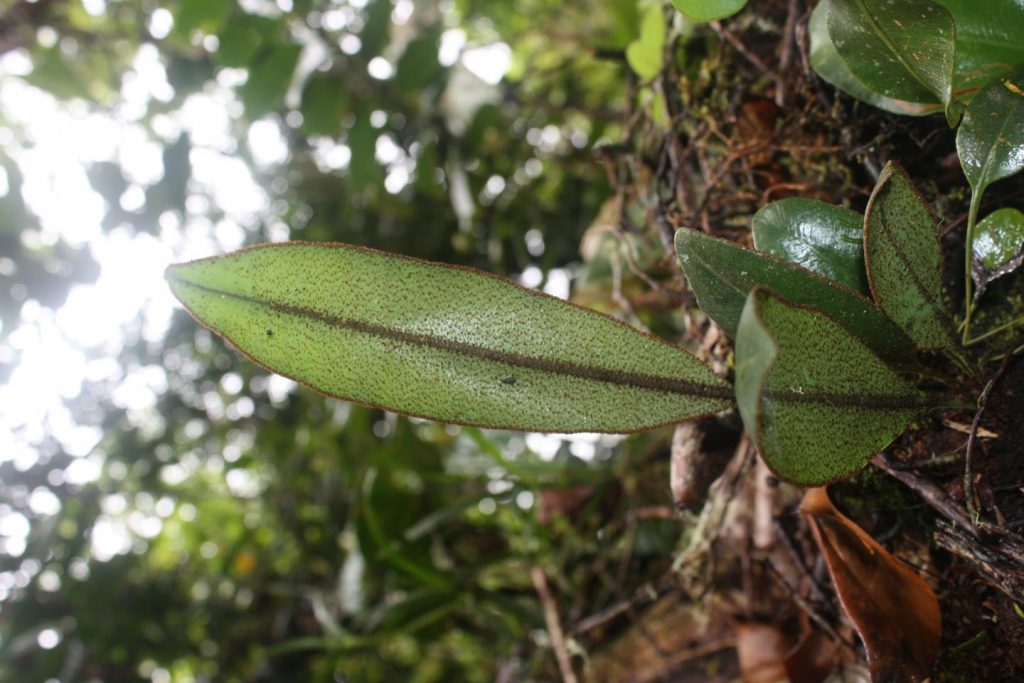
Colombia is estimated to harbor the highest fern diversity of any Neotropical country, with more than 1600 native fern species currently documented.
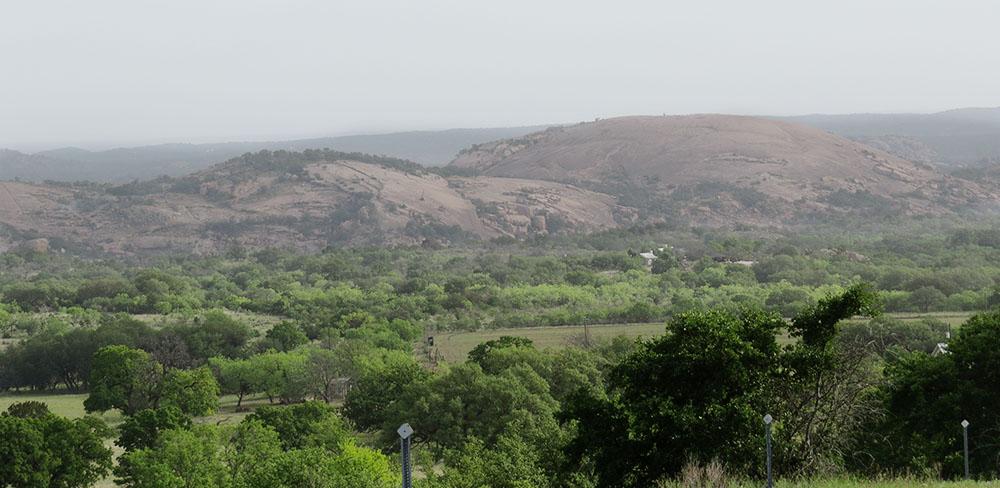
Enchanted Rock State Natural Area is a 1,643 acre property owned by the state of Texas and managed for wildlife and tourism. The land was purchased from private landowner Charles Moss by the Nature Conservancy of Texas in 1978 and was later sold to the state of Texas. The park opened as a state natural area in 1978. Prior to its acquisition by the Nature Conservancy, the property was held by several private landowners and used for cattle ranching and tourism.

Since 2013, BRIT has invested in a program to document plant biodiversity in the Southern Appalachians. In the most recent project of this effort, BRIT research associates Devin Rodgers and Chris Mausert-Mooney, led by BRIT botanical explorer Dwayne Estes, are piloting an effort to provide critical vegetation data so that researchers can investigate the long-term effects of climate change, invasive species, and acid rain on the ecology of high-elevation ecosystems in the Blue Ridge Mountains. This project will monitor high-quality brook trout streams and document the riparian vegetation of four watersheds in east Tennessee. It emphasizes the important connection between vegetation and broader ecosystem conservation.
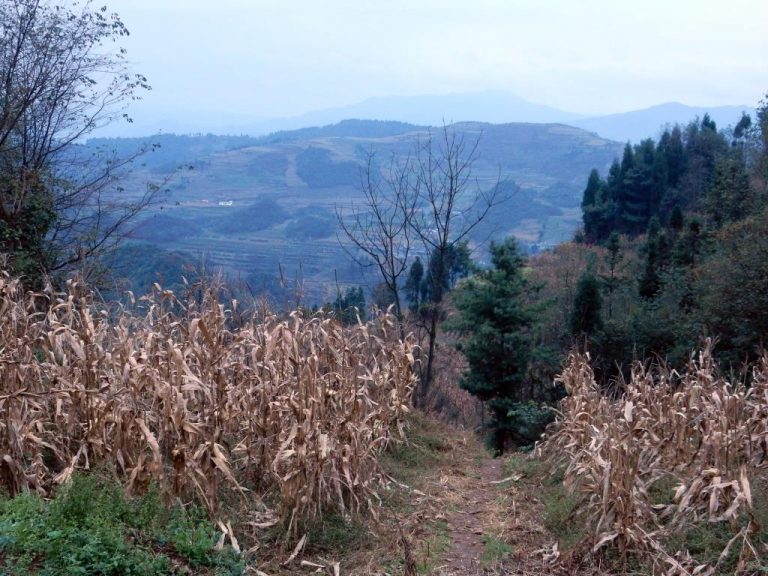
Researcher Dwayne Estes is leading efforts to restore the imperiled tallgrass prairies of central and western Kentucky and Tennessee through his Pennyroyal Plain Prairie Restoration Project (PPPRP). Prior to 1800, these prairies covered 3.7 million acres and supported bison and prairie chickens. Today, nearly 99.9% of the prairie has been destoryed; the last remnants can be found at Fort Campbell Army Base near Clarksville, TN. Estes has built a coalition of state and federal agencies, private corporations and businesses, and local and state leaders to help restore the 300 acres of prairie remnants on public land, using seed from the prairie at Fort Campbell, and to search for privately owned prairie remnants and work to secure those prairies from further loss.
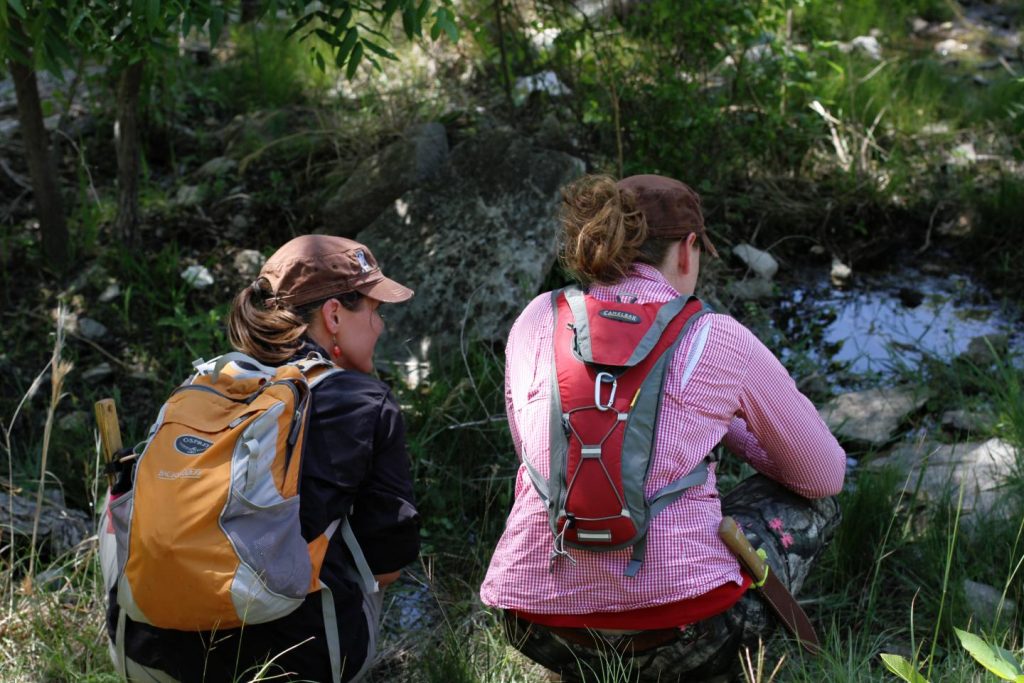
Biosurveys are an important research activity used to document the biodiversity of an area. It is these baseline surveys that allow us to better understand how natural and human influences change an environment over time. During biosurveys, we also collect specimens which we identify, mount on archival paper, and deposit in the BRIT herbarium. These specimens are often collected in duplicate so they can be exchanged with herbaria worldwide, which enhances the availability of research material in the BRIT herbarium and herbaria of our exchange partners.

This book series published by BRIT provides a detailed and fully illustrated inventory of native and naturalized plant species for major regions of Texas. These floras provide solid science as well as information vital to user communities including ranchers, foresters, farmers, Agricultural Extension Agents, horticultural producers, Master Gardeners, homeowners, and developers. Dr. George Diggs (Austin College) is primary author, with BRIT associates Barney Lipscomb, Robert O’Kennon, and Robert George (Project Coordinator), and Monique Dubrule Reed (Texas A&M).
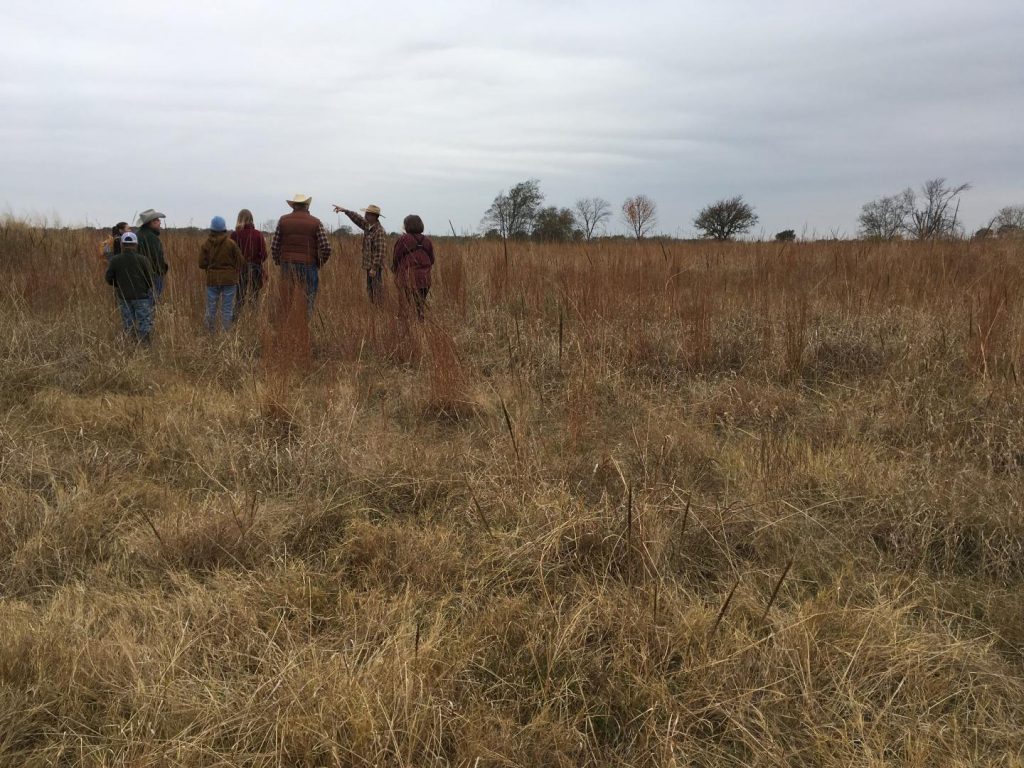
The Prairie Research Program (PReP) includes projects related to natural resource management, ecology, native vegetation, and stewardship of prairie and rangeland habitats. We collaborate with landowners to investigate plant biodiversity metrics, often associated with disturbance events (past and present).
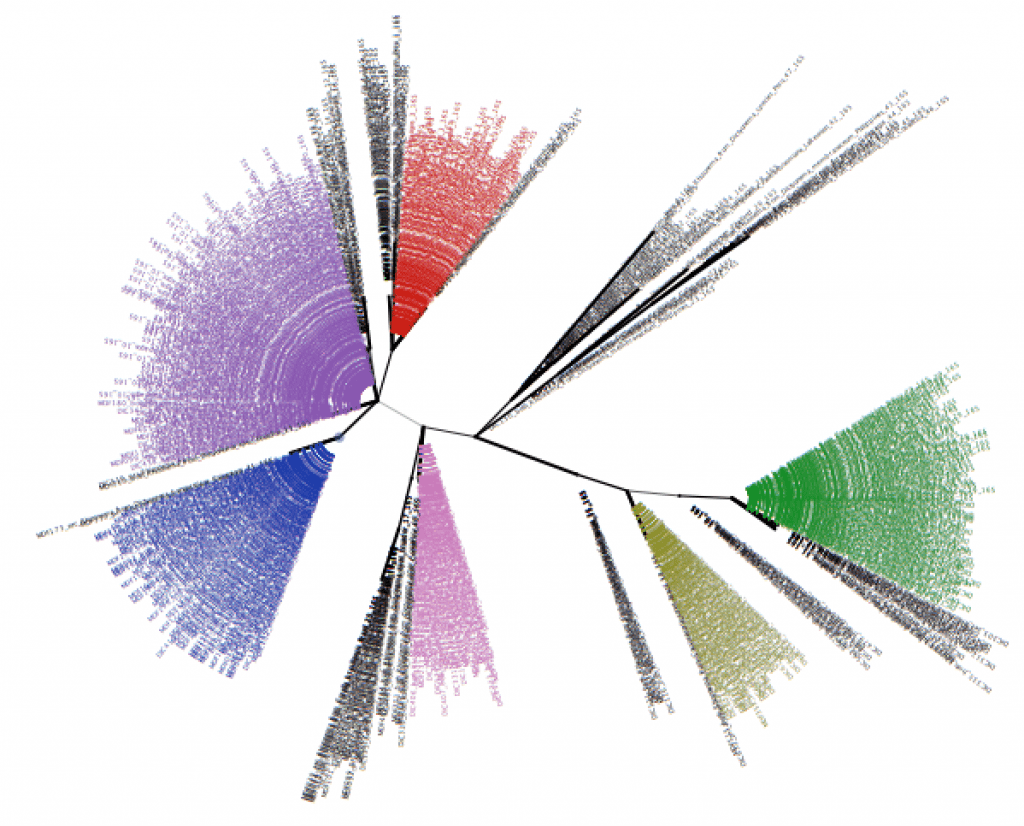
As models for symbiosis, lichens contain many completely unrelated associates with separate evolutionary histories. Lichen systematics can therefore produce phylogenies that reconstruct the history of the fungal partner, the photosynthetic partner, or from other microorganisms.

Our understanding of microbiome diversity and functionality in organisms and systems has rapidly advanced as new technologies have been developed and have become more accessible. Lichens have been the subject of these studies for over a decade now, but there is still much left to do.
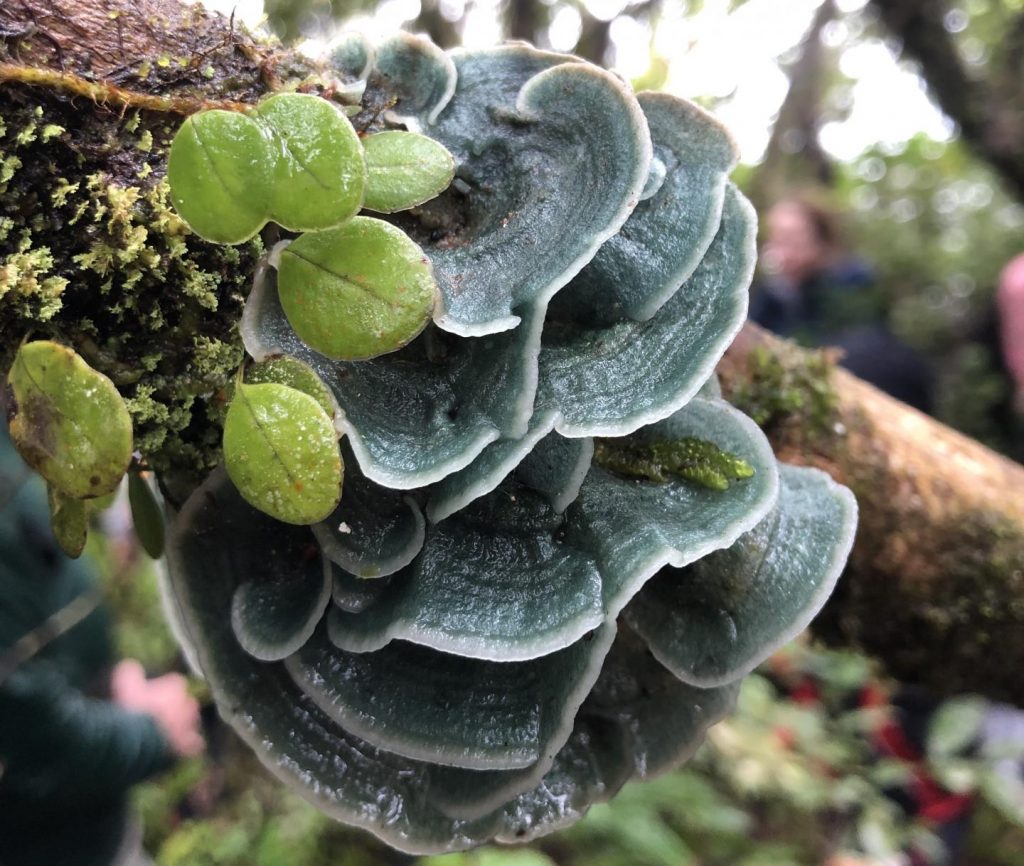
The study of distinct lineages as part of the lichen symbiosis opens a myriad of interesting and yet to be explored questions. A few that I am interested are regarding Horizontal Gene Transfer (HGT) among the symbionts and detecting genes responsible for lichenization in Basidiomycota.
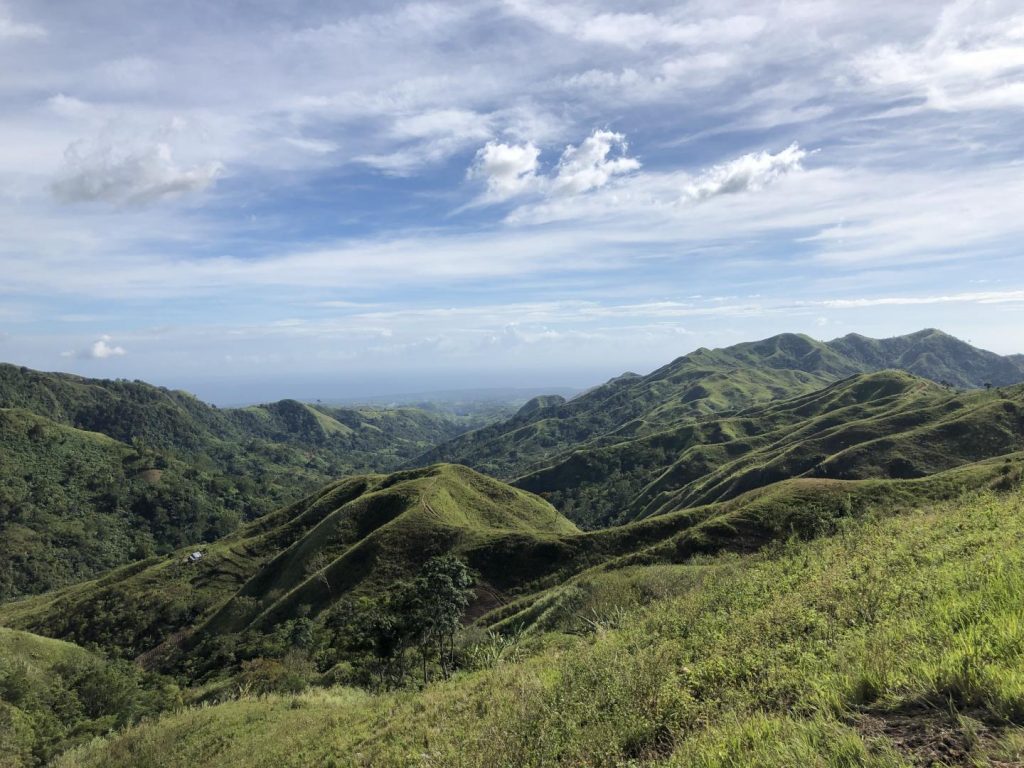
Please visit Dr. Dal Forno’s website or the main NSF-project page for the most updated content on this research

We are interested in what the species of ferns and lycophytes are and where they occur—something often poorly known for tropical species—and the evolutionary relationships among the species. We generate phylogenetic trees based on DNA sequences that show how the species are related and use the trees as a framework for answering questions about character evolution, biogeography, and evolutionary processes.
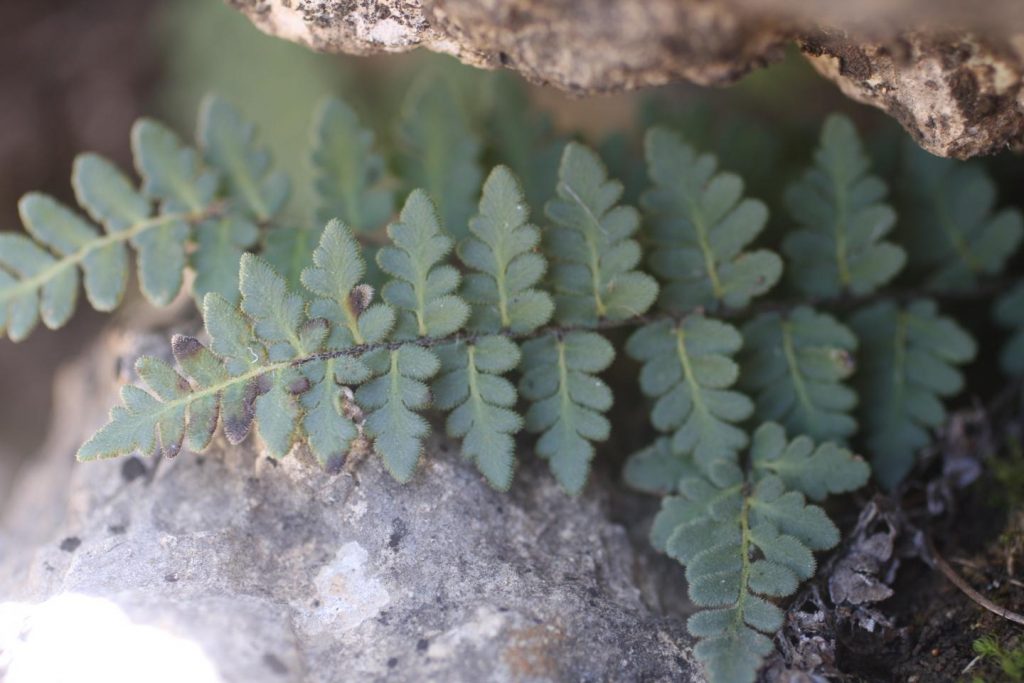
Texas is home to more than 127 native species of ferns and lycophytes
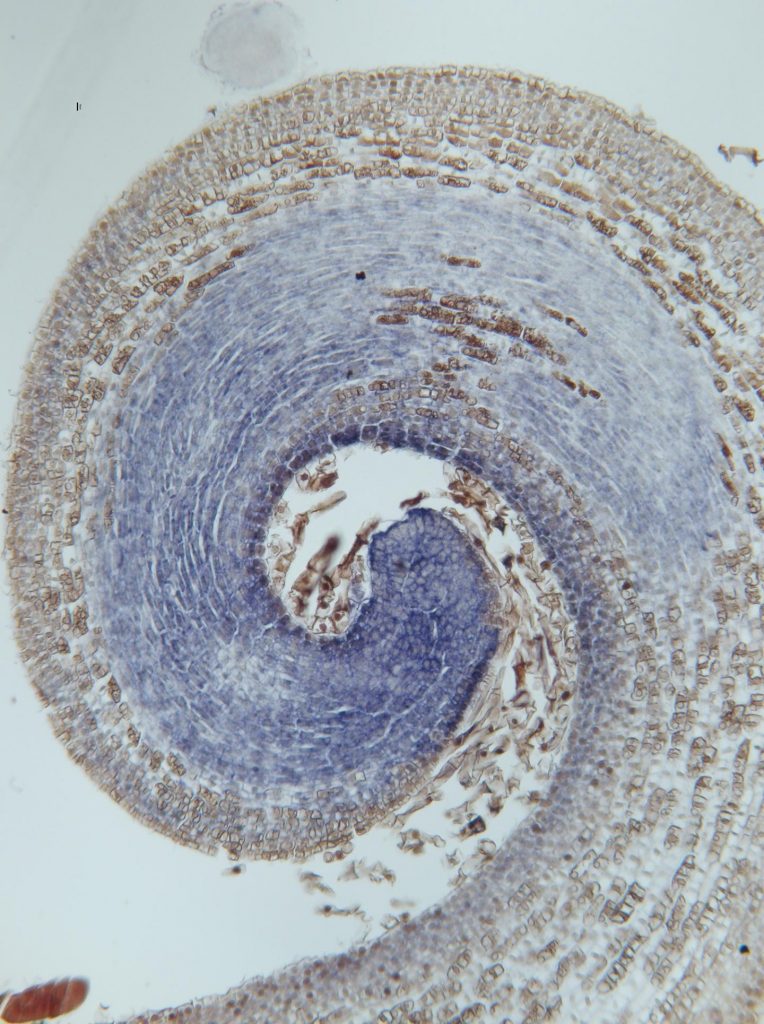
The evolution of leaves changed life on Earth. We study the expression and phylogeny of leaf development genes in lycophytes and ferns to better understand the evolution and development of leaves in the land plants.
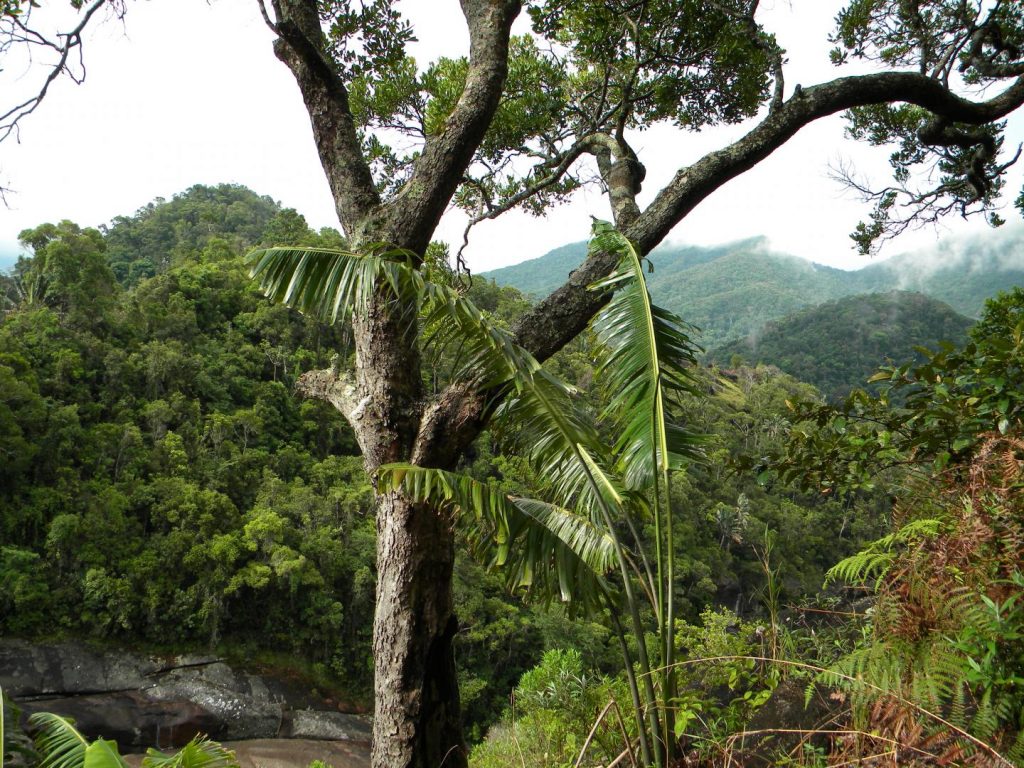
Madagascar is one of the world’s hottest biodiversity hotspots, home to an incredibly diverse and endemic flora. Much of my research is focused here, where I am interested in understanding the evolution of plant diversity in the ecological and geographic context. My work uses phylogenomic tools to elucidate rapid radiations in the myrrh genus, Commiphora (Burseraceae) and more broadly in endemic lineages from the sunflower family (Asteraceae). These lineages are also characterized by disjunct distributions in South America and I’m interested in comparing diversification strategies in dry and seasonally dry tropical forests found here.
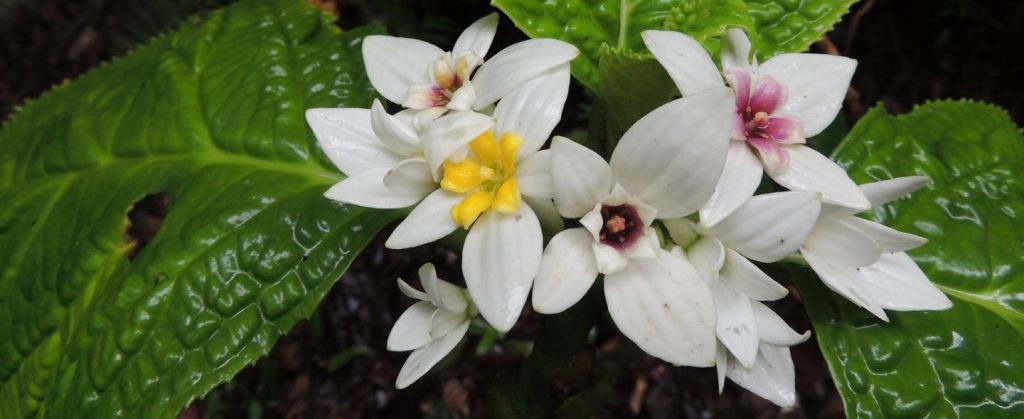
The Philippines archipelago contains unique floral and faunal diversity that is critically threatened by habitat loss, with only 3-7% of original habitat remaining. To address the urgent need for further documenting this diversity in the face of impending large-scale species extinction, I am working with colleagues from the U.S. and the Philippines on a four-year project to document the land plants and lichens of the southern Philippines through a series of large field expeditions and subsequent taxonomic study. T

The plant order Ericales contains ca. 8000 species of flowering plants distributed in 22 families. The order contains a number of economically important edible plants, including tea (Camellia sinensis), kiwi (Actinidia), persimmon (Diospyros), Brazil nut (Bertholettia excelsa), star-apple (Chrysophyllum cainito), and blueberries and cranberries (Vaccinium), as well as popular ornamental plants such as azaleas and rhododendrons (Rhododendron), primroses (Primula), Impatiens, Erica, Phlox, and Camellia.

Natural history collections play an increasingly vital role in biodiversity studies. Much of the research that leverages these collections combines this accumulated diversity knowledge with genomic approaches. There is a movement toward improved collection practices that incorporate resources that can be used in genomics research.
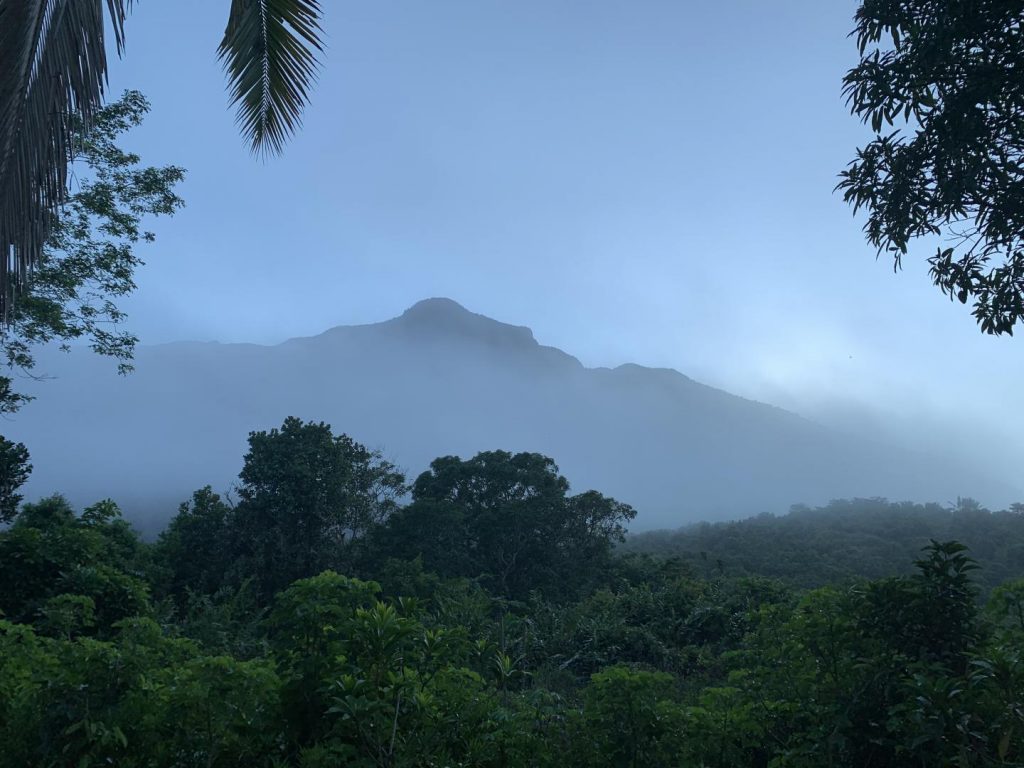
These are all just some of the steps involved in discovering new plant species and understanding plant biodiversity – or at least they were on my most recent trip to Madagascar in search of strange and wonderful plant life.

As models for symbiosis, lichens contain many completely unrelated associates with separate evolutionary histories. Lichen systematics can therefore produce phylogenies that reconstruct the history of the fungal partner, the photosynthetic partner, or from other microorganisms.

Our understanding of microbiome diversity and functionality in organisms and systems has rapidly advanced as new technologies have been developed and have become more accessible. Lichens have been the subject of these studies for over a decade now, but there is still much left to do.

The study of distinct lineages as part of the lichen symbiosis opens a myriad of interesting and yet to be explored questions. A few that I am interested are regarding Horizontal Gene Transfer (HGT) among the symbionts and detecting genes responsible for lichenization in Basidiomycota.

Please visit Dr. Dal Forno’s website or the main NSF-project page for the most updated content on this research
The XX International Botanical Congress was held Madrid, Spain from July 21 – 27, 2024.

Colombia is estimated to harbor the highest fern diversity of any Neotropical country, with more than 1600 native fern species currently documented.

We are interested in what the species of ferns and lycophytes are and where they occur—something often poorly known for tropical species—and the evolutionary relationships among the species. We generate phylogenetic trees based on DNA sequences that show how the species are related and use the trees as a framework for answering questions about character evolution, biogeography, and evolutionary processes.

Texas is home to more than 127 native species of ferns and lycophytes

The evolution of leaves changed life on Earth. We study the expression and phylogeny of leaf development genes in lycophytes and ferns to better understand the evolution and development of leaves in the land plants.
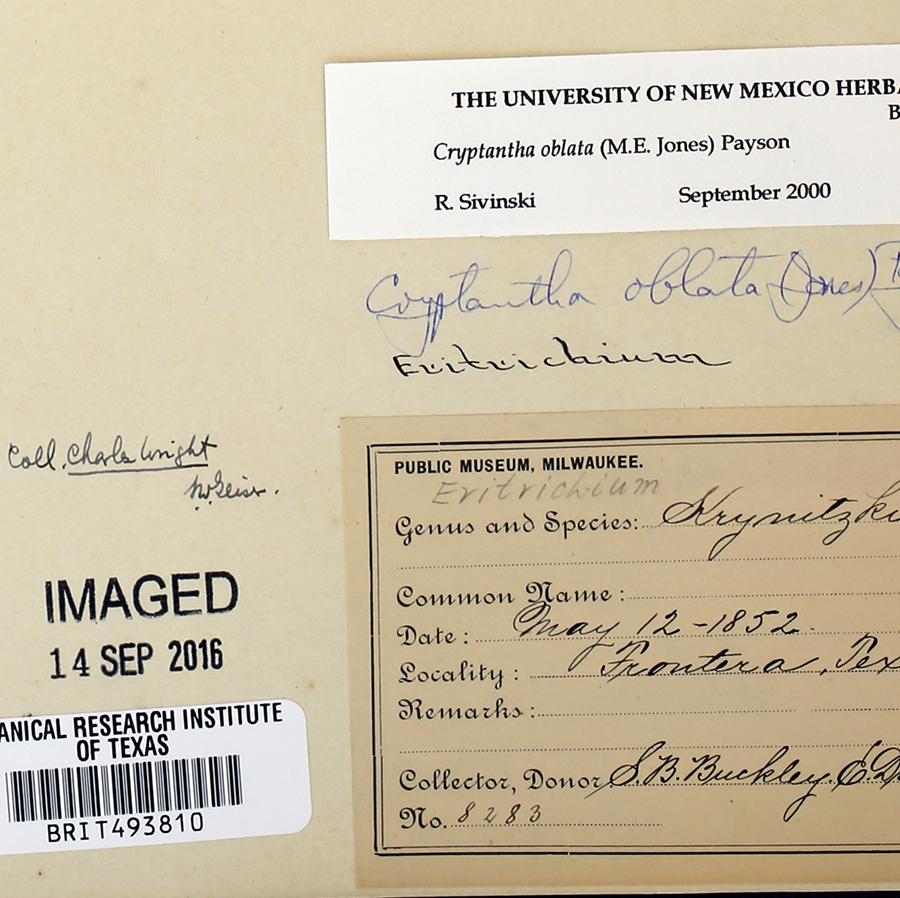
It was 1875, and John Muir was a busy man. He was already well-known for his

The urban environment is an ecosystem in itself. With this living roof, BRIT is bringing a functional, native Texas ecosystem back into the built environment. Rather than just looking for plants that can survive in hot environments, BRIT asked the question, “What are the environmental parameters of a roof and what are its analog and native environs?”
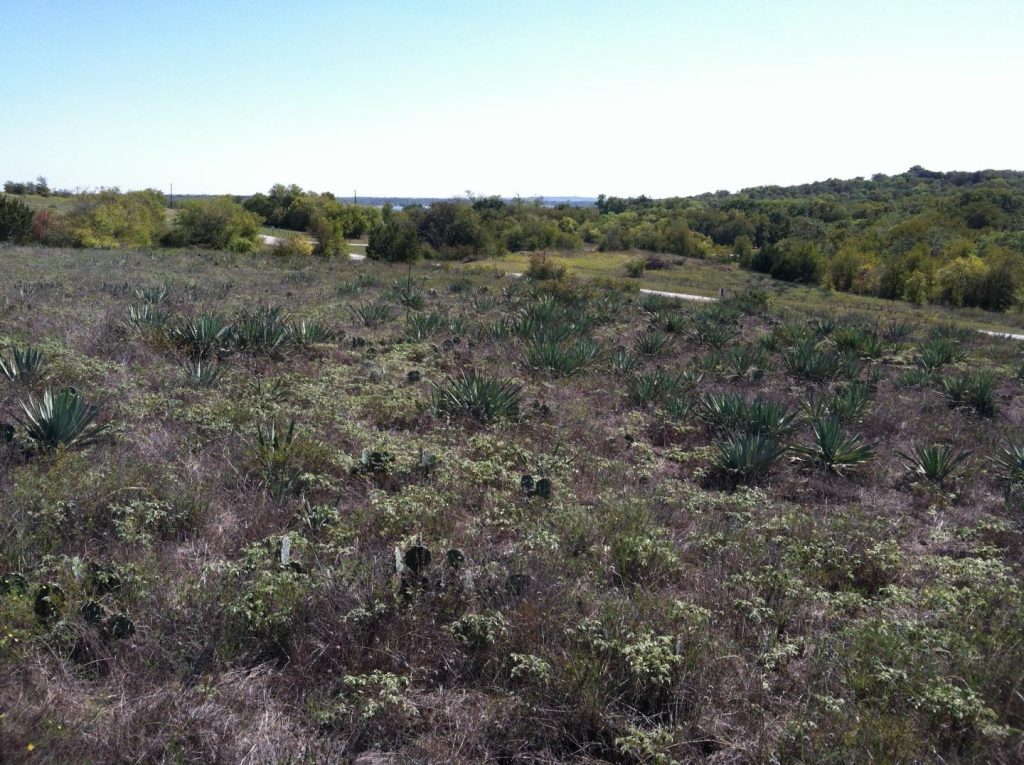
Byerley Best, B. and R.K. Swadek. 2019. Plant cover & diversity on a young prairie-style green roof relative to slope position & planting assemblage. Poster presentation at Botany 2019, annual conference of the Botanical Society of America, 27-31 Jul 2019, Tucson, Arizona, USA.
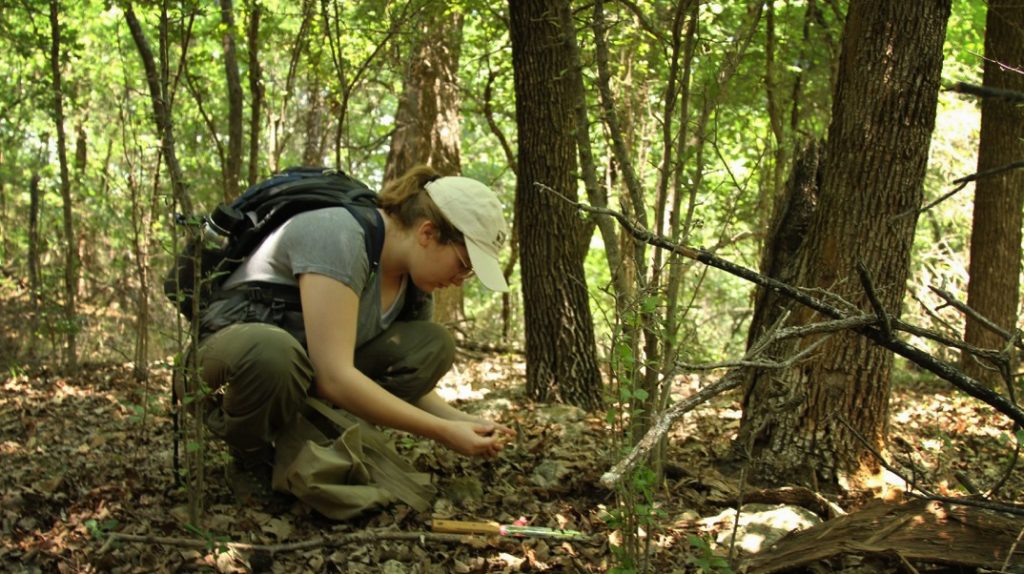
This article was written by Sydney Jackson, 2017 BRIT Summer Intern and student at Austin
The XX International Botanical Congress was held Madrid, Spain from July 21 – 27, 2024.

The plant order Ericales contains ca. 8000 species of flowering plants distributed in 22 families. The order contains a number of economically important edible plants, including tea (Camellia sinensis), kiwi (Actinidia), persimmon (Diospyros), Brazil nut (Bertholettia excelsa), star-apple (Chrysophyllum cainito), and blueberries and cranberries (Vaccinium), as well as popular ornamental plants such as azaleas and rhododendrons (Rhododendron), primroses (Primula), Impatiens, Erica, Phlox, and Camellia.

Last December, two BRIT botanists and their teams of colleagues were awarded separate grants from
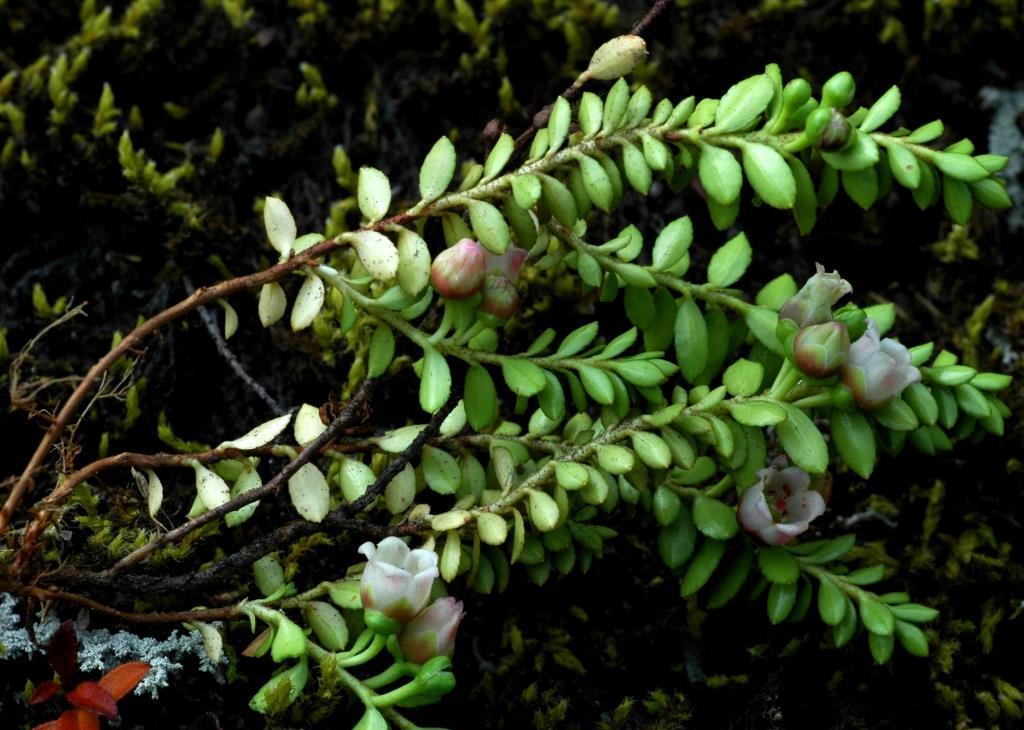
BRIT’s new Herbarium Director Dr. Peter Fritsch and his Chinese colleagues published an exciting new species discovery

The Philippines archipelago contains unique floral and faunal diversity that is critically threatened by habitat loss, with only 3-7% of original habitat remaining. To address the urgent need for further documenting this diversity in the face of impending large-scale species extinction, I am working with colleagues from the U.S. and the Philippines on a four-year project to document the land plants and lichens of the southern Philippines through a series of large field expeditions and subsequent taxonomic study. T
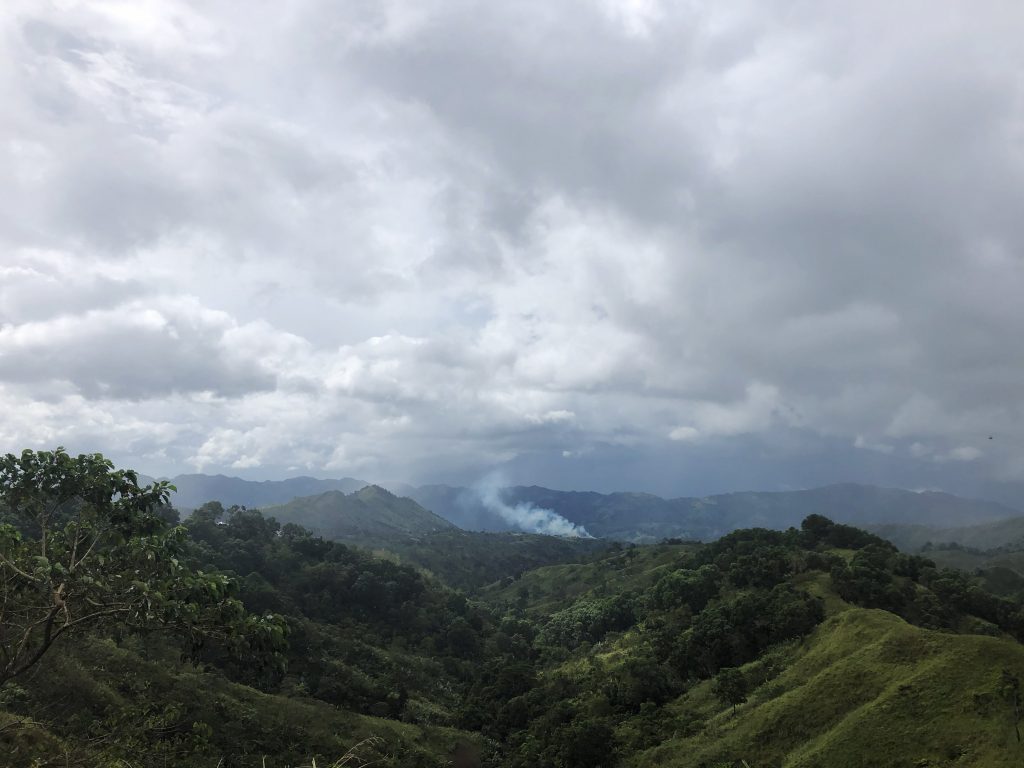
In December of 2019, BRIT Librarian participated in expedition two of the Plant Discovery In the Southern Philippines project.
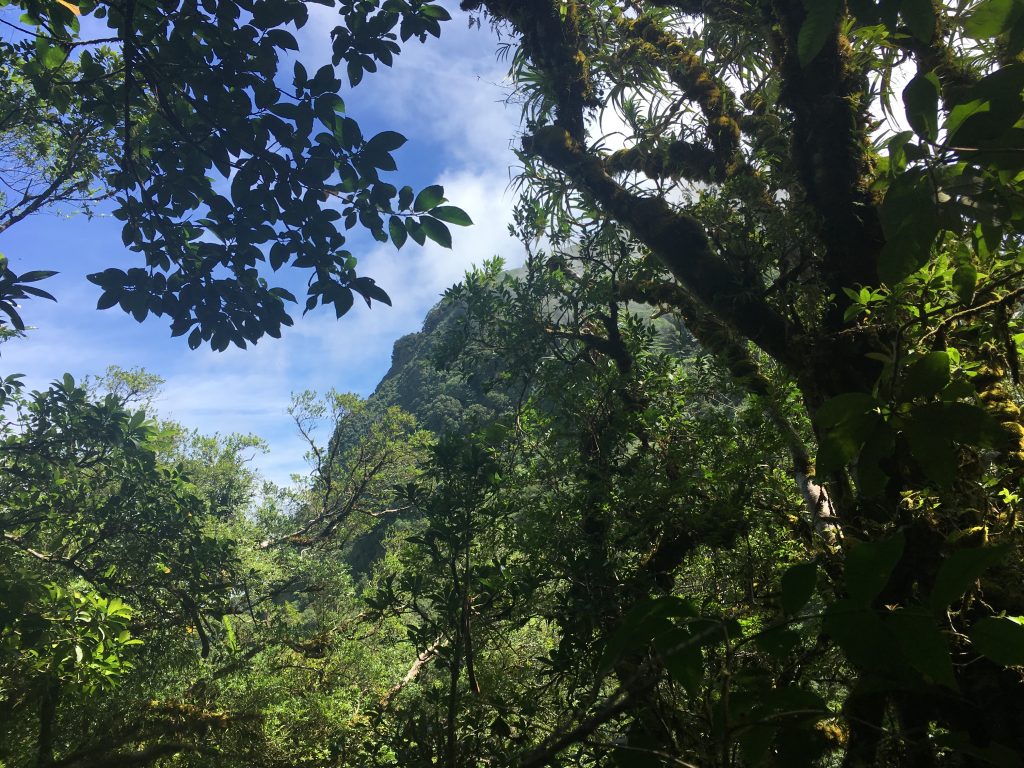
Expedition 2, led by Peter Fritsch of BRIT, will include 20 Filipino and international participants (botanists and lichenologists) who will survey Negros Island and the Marilog Forest on the island of Mindanao over the month of December 2019.
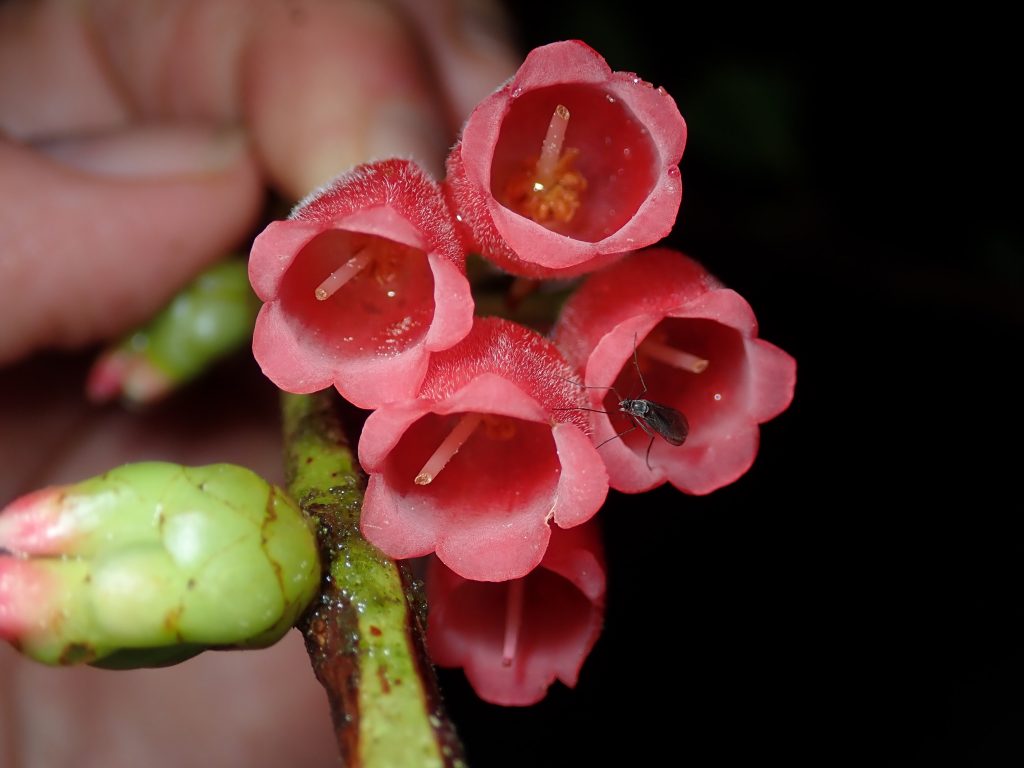
The first expedition to the Philippines has been going splendidly, with many hundreds of collections,
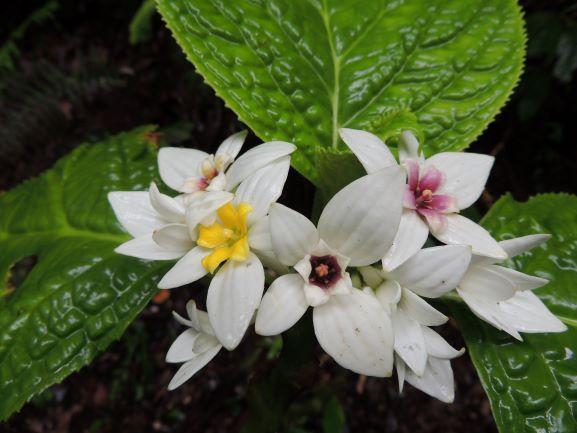
Texas botanists will collaborate with other U.S. institutions and international personnel to conduct research in
The XX International Botanical Congress was held Madrid, Spain from July 21 – 27, 2024.

Natural history collections play an increasingly vital role in biodiversity studies. Much of the research that leverages these collections combines this accumulated diversity knowledge with genomic approaches. There is a movement toward improved collection practices that incorporate resources that can be used in genomics research.

Madagascar is one of the world’s hottest biodiversity hotspots, home to an incredibly diverse and endemic flora. Much of my research is focused here, where I am interested in understanding the evolution of plant diversity in the ecological and geographic context. My work uses phylogenomic tools to elucidate rapid radiations in the myrrh genus, Commiphora (Burseraceae) and more broadly in endemic lineages from the sunflower family (Asteraceae). These lineages are also characterized by disjunct distributions in South America and I’m interested in comparing diversification strategies in dry and seasonally dry tropical forests found here.

Natural history collections play an increasingly vital role in biodiversity studies. Much of the research that leverages these collections combines this accumulated diversity knowledge with genomic approaches. There is a movement toward improved collection practices that incorporate resources that can be used in genomics research.

These are all just some of the steps involved in discovering new plant species and understanding plant biodiversity – or at least they were on my most recent trip to Madagascar in search of strange and wonderful plant life.

Fort Worth, TX – The Global Genome Initiative for Gardens (GGI-Gardens), Botanic Gardens Conservation International

Natural history collections play an increasingly vital role in biodiversity studies. Much of the research that leverages these collections combines this accumulated diversity knowledge with genomic approaches. There is a movement toward improved collection practices that incorporate resources that can be used in genomics research.

Natural history collections play an increasingly vital role in biodiversity studies. Much of the research that leverages these collections combines this accumulated diversity knowledge with genomic approaches. There is a movement toward improved collection practices that incorporate resources that can be used in genomics research.
FORT WORTH BOTANIC GARDEN
3220 Botanic Garden Blvd
Fort Worth, Texas 76107
(817) 463-4160
Click here to email us!
BOTANICAL RESEARCH INSTITUTE OF TEXAS
FOLLOW US ON SOCIAL
We respectfully acknowledge that the Fort Worth Botanic Garden is located on traditional lands of Indigenous Peoples. We honor the ancestry, heritage, and gifts of all Indigenous Peoples who were sustained by these lands and give thanks to them. We are grateful that these lands continue to provide enrichment for many people today. [More…]
©2023 Fort Worth Botanic Garden